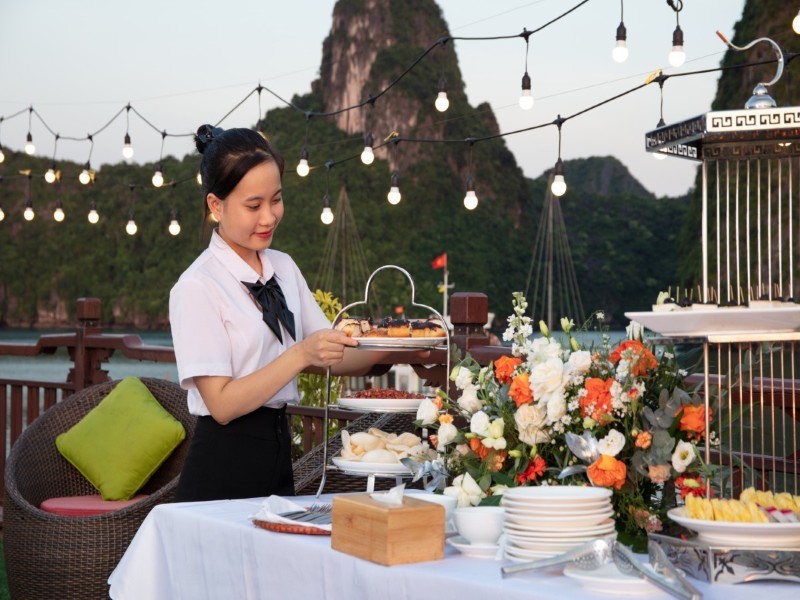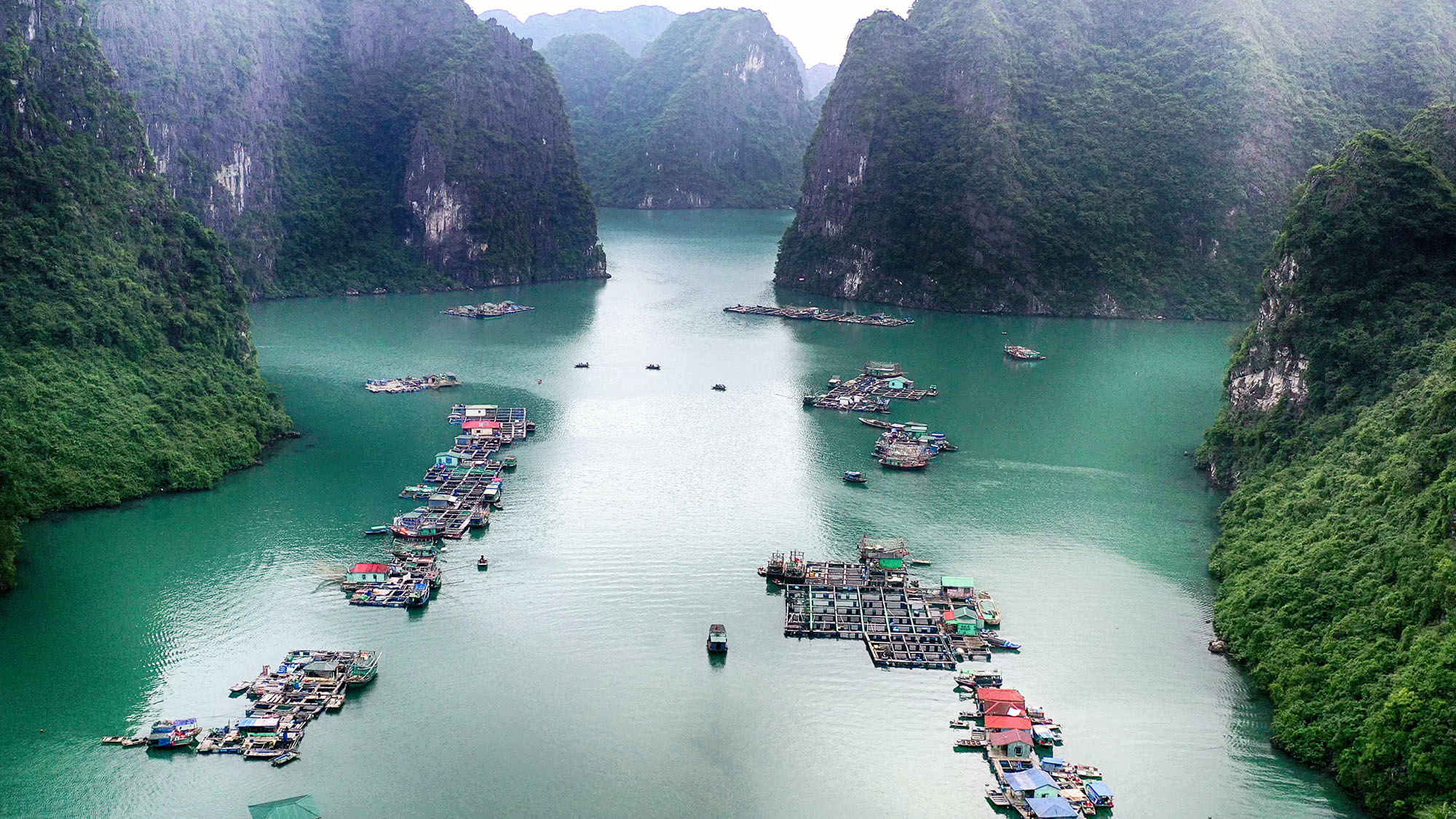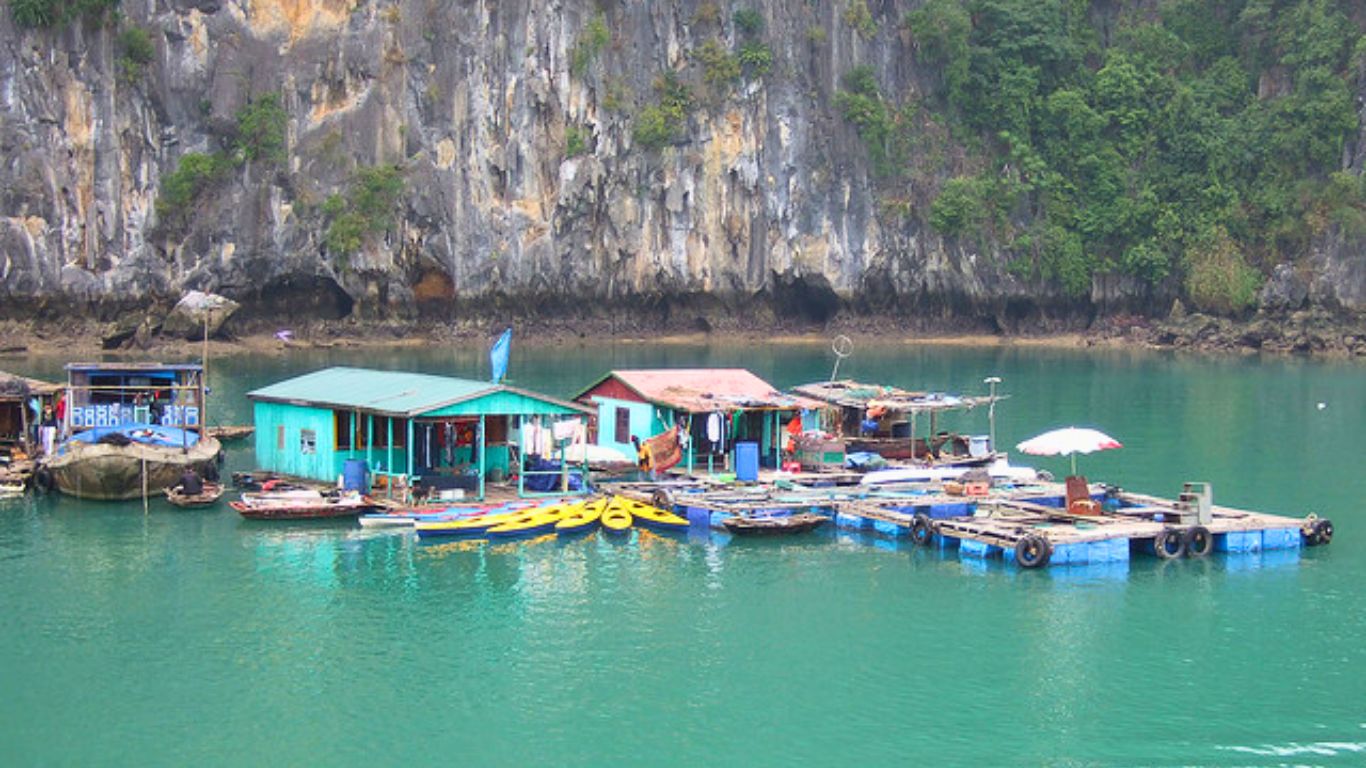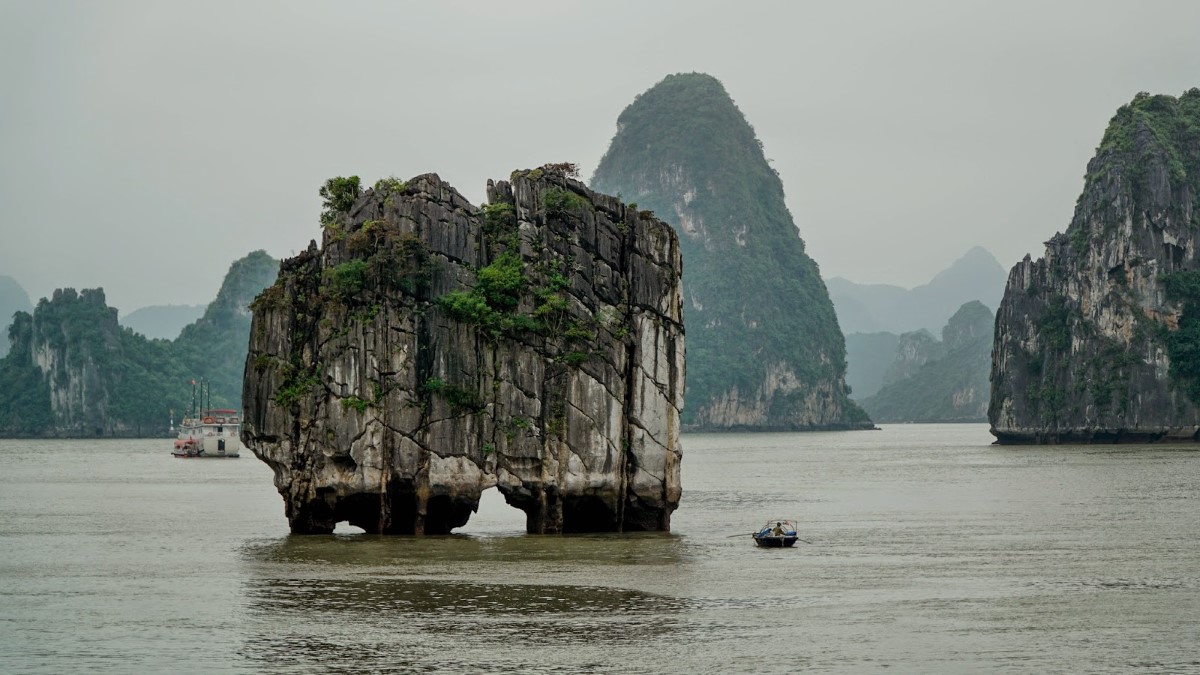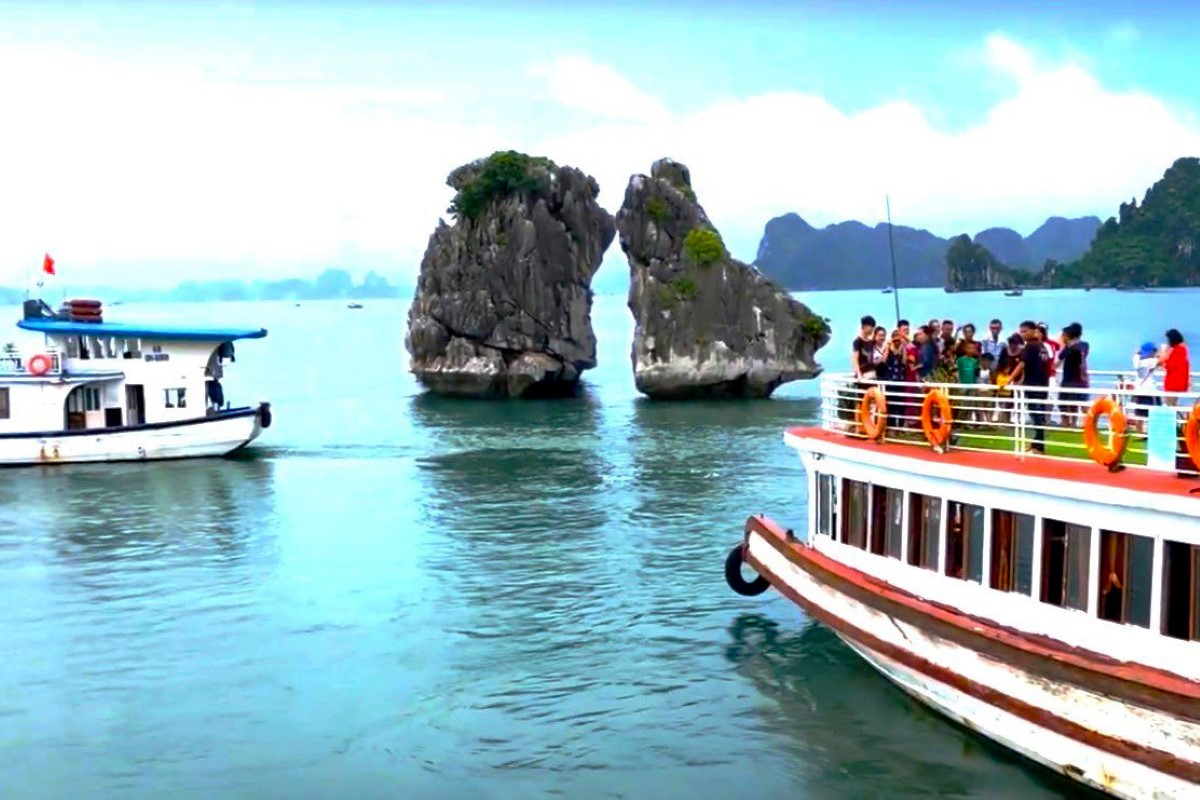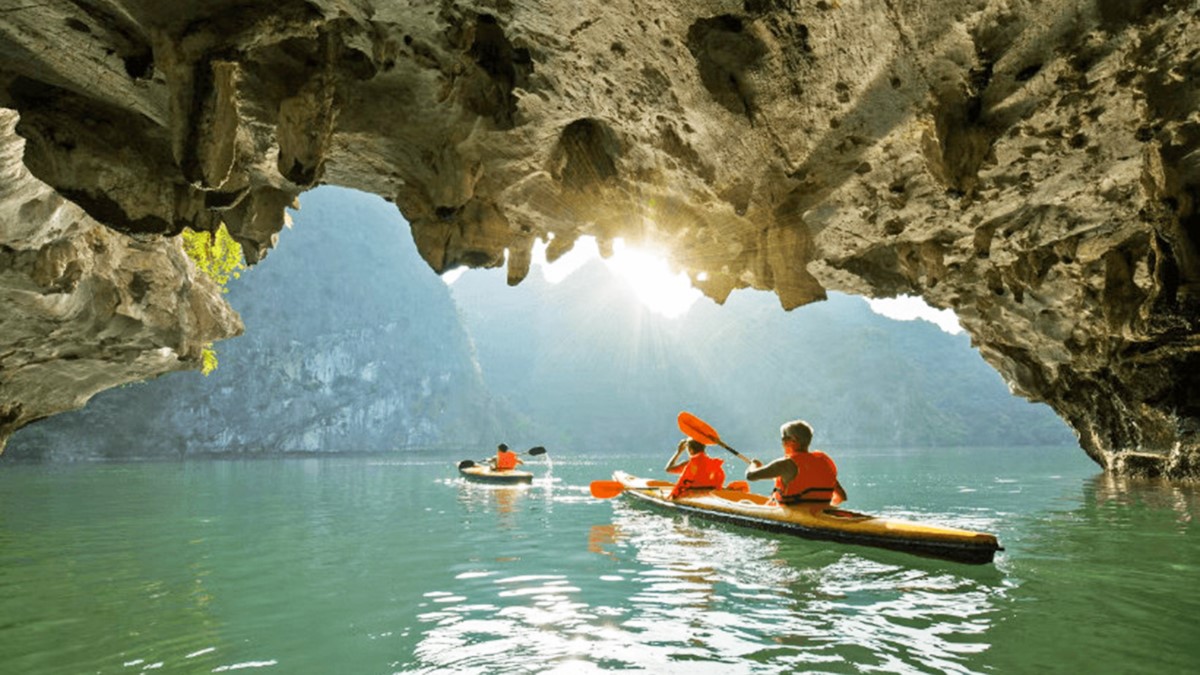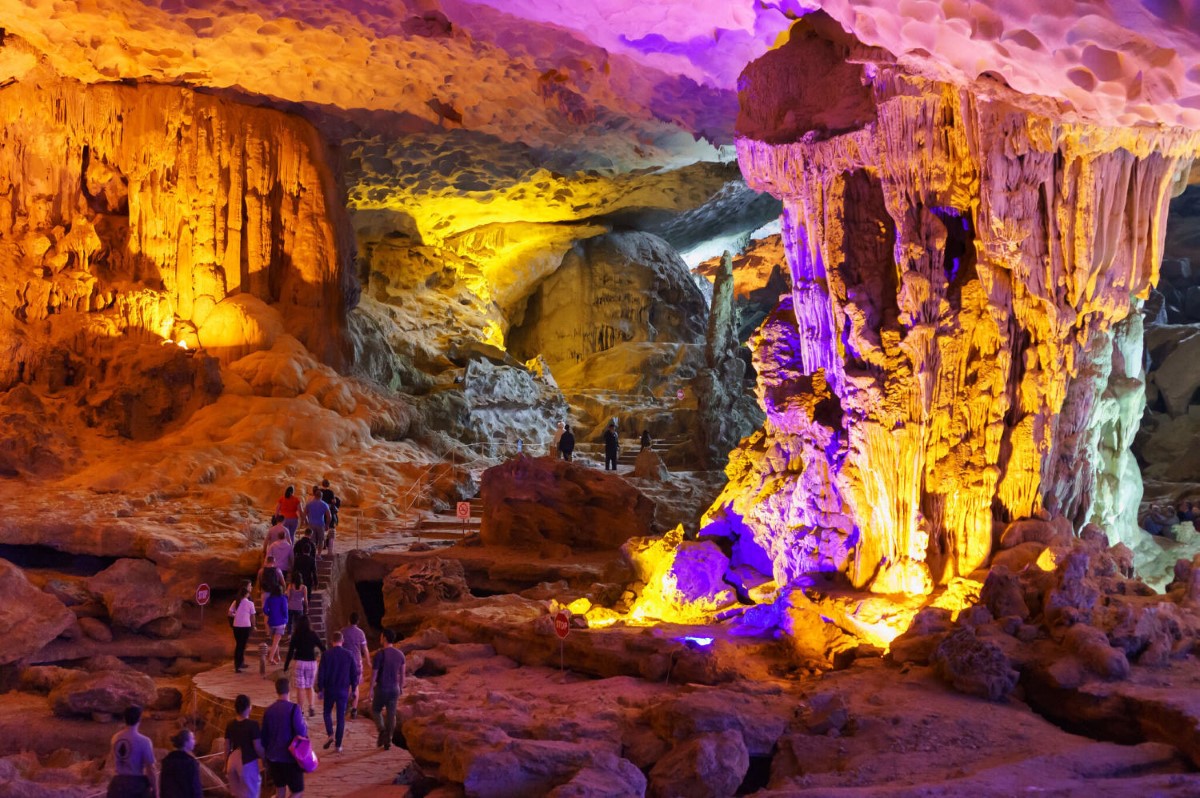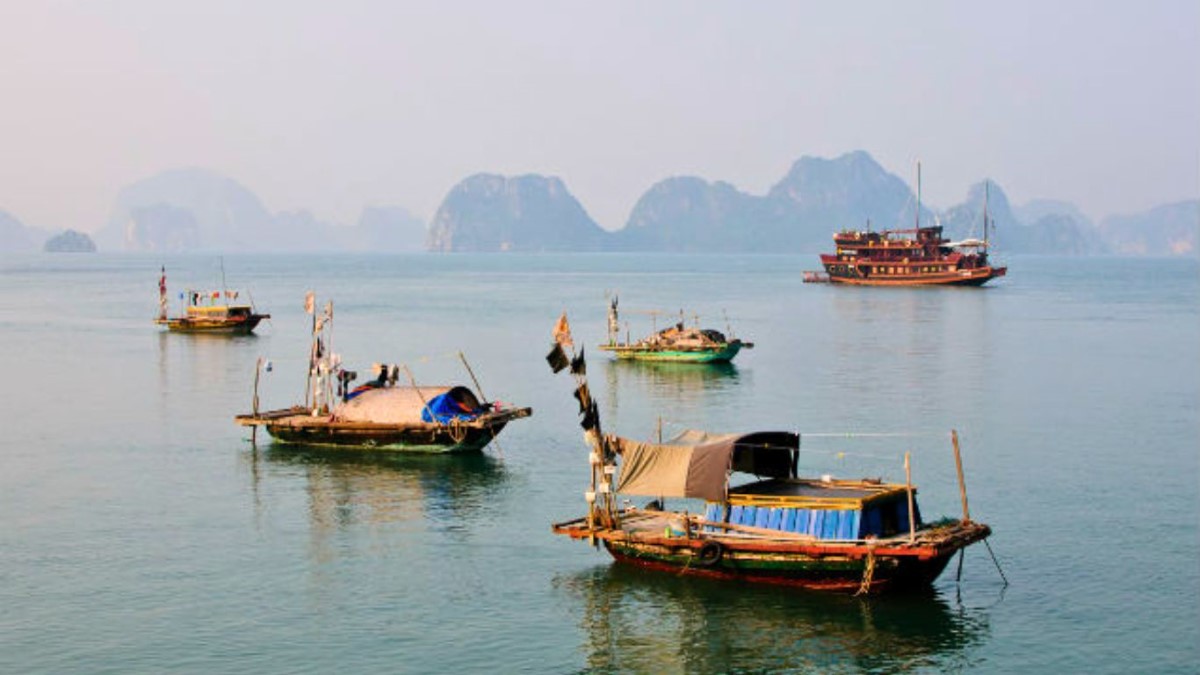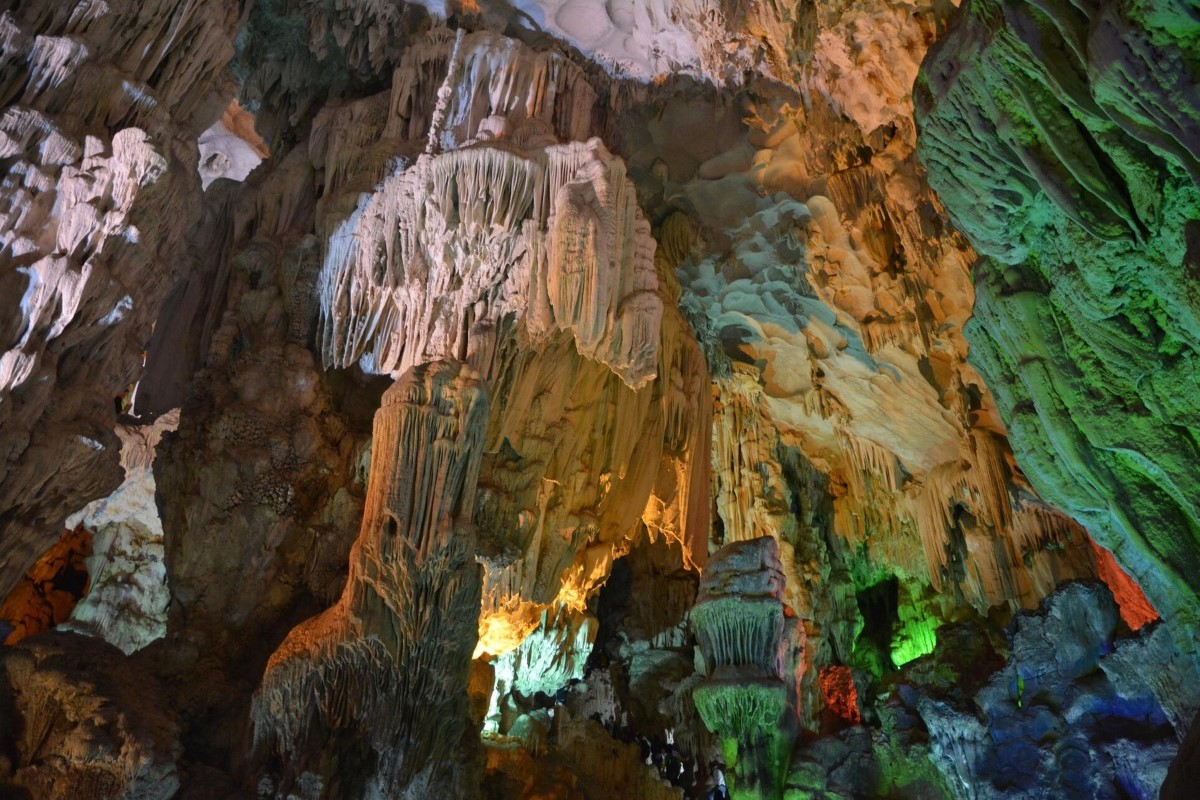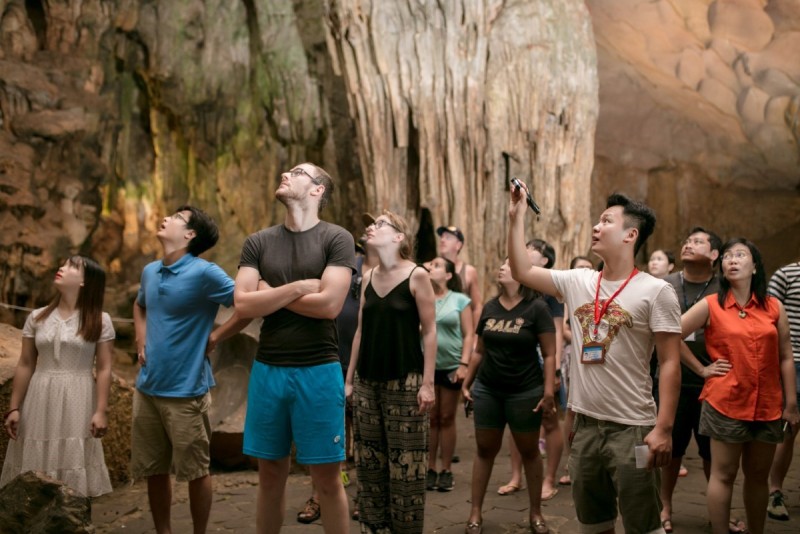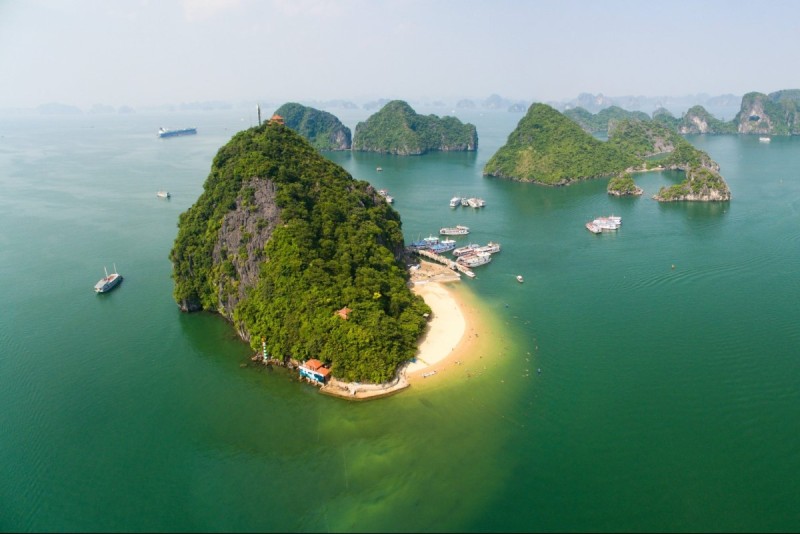Cho Da Islet Halong Bay Complete Travel Guide and Things to Know
Cho Da Islet is a stunning natural landmark in Halong Bay known for its unique stone dog-shaped limestone formation. It offers crystal-clear waters ideal for snorkeling and swimming, serene surroundings for peaceful exploration, and rich local legends that connect visitors to Vietnamese culture.
Discovering Cho Da Islet Halong Bay: What Makes It Special
Nestled within the breathtaking seascape of Halong Bay, Cho Da Islet stands out as a gem among the region’s many scenic islets. Known for its striking natural karsts and unique limestone formations, this islet offers a distinctive charm that sets it apart from other Halong Bay attractions. Framed by emerald waters and backed by lush tropical flora, Cho Da Islet invites you to explore a place where geological wonders meet serene beauty. Its calm environment, coupled with its rich cultural stories, makes it a must-visit destination for travelers seeking an authentic and peaceful escape. Whether you are curious about what Cho Da Islet is or looking for a tranquil spot away from the crowds, this islet promises a truly memorable experience.
Discover more about Cho Da Islet Halong Bay and see why it deserves a place on your travel list.
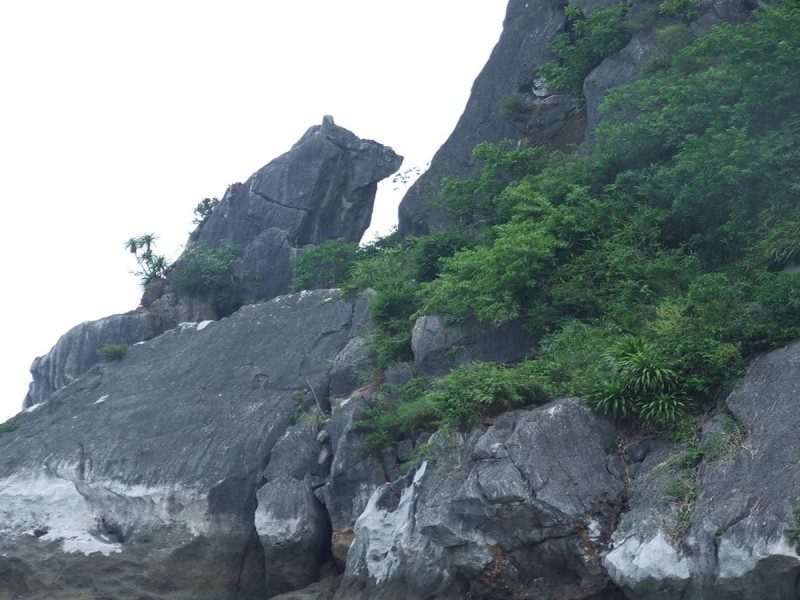
The Natural Beauty That Awaits You
The natural scenery of Cho Da Islet Halong Bay captivates visitors with its blend of geological marvels and pristine surroundings. This islet is a showcase of:
- Unique limestone karsts rising dramatically from the water, shaped over millennia by natural erosion.
- Crystal-clear emerald waters that shimmer in the sunlight, perfect for swimming or simply soaking in the view.
- Tropical flora that clings to the cliffs and shores, adding vibrant green hues against the rugged rocks.
- Rich marine biodiversity beneath the surface, making it a hotspot for snorkeling enthusiasts.
This blend of features creates an inspiring natural canvas that embodies the essence of Halong Bay natural beauty. If you appreciate untouched landscapes and geological wonders, Cho Da Islet scenery will leave you awe-inspired.
Take the time to immerse yourself in the peaceful surroundings of Cho Da Islet Halong Bay and enjoy its stunning views and quiet charm.
Unique limestone formations and the “stone dog” shape
The most iconic feature of Stone Dog Islet Halong Bay is its remarkable limestone formation resembling a stone dog guarding the bay. This natural sculpture has been carved by:
- Natural erosion processes acting on the karst geology over thousands of years.
- The layering and weathering of rock formations in Vietnam, creating distinctive shapes and textures.
- Geological heritage that adds cultural and aesthetic significance to the islet within Halong Bay.
Visitors are often struck by the lifelike appearance of the “stone dog,” which stands as a silent sentinel against the backdrop of the bay’s waters. Understanding this natural wonder enriches your appreciation of Cho Da Islet beyond its beauty.
Don’t miss the chance to photograph and marvel at this extraordinary geological feature during your visit.
Crystal-clear waters perfect for snorkeling and swimming
Surrounding Cho Da Islet, the waters offer excellent conditions for snorkeling and swimming thanks to their clarity and calmness. Here’s what you can expect:
- Pristine water quality with visibility that lets you admire colorful coral reefs and diverse marine life.
- Ideal swimming spots in Halong Bay, where the water temperature averages around 25-30°C, comfortable for most visitors.
- Essential snorkeling gear like masks and fins are recommended for a safe and enjoyable experience.
- Opportunities to observe vibrant fish species and coral formations while respecting the marine environment.
Whether you are a seasoned snorkeler or a casual swimmer, the waters around Cho Da Islet provide a refreshing and engaging aquatic adventure.
Plan your trip to include snorkeling at Cho Da Islet and experience the underwater beauty of Halong Bay firsthand.
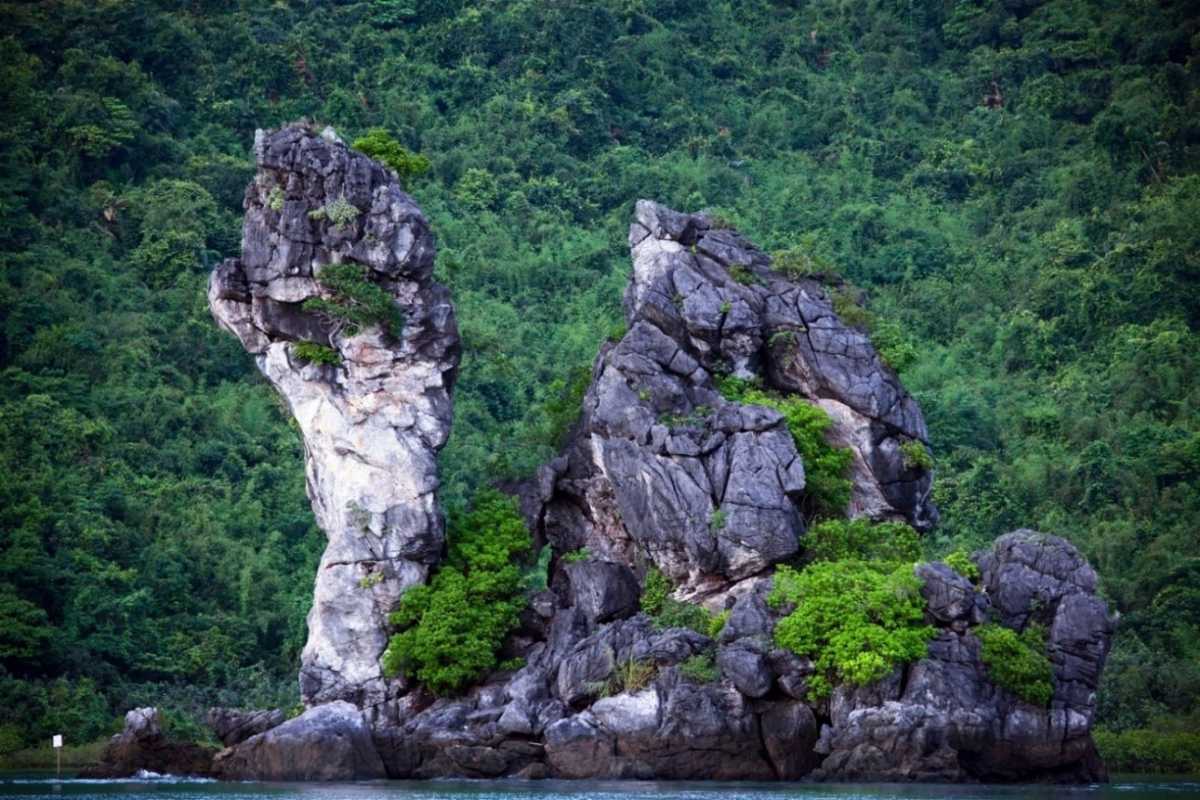
The Stories Behind the Cho Da Islet
The magic of Cho Da Islet extends far beyond its natural beauty. It is deeply woven into the rich tapestry of Halong Bay folklore, where local myths and maritime heritage bring the landscape to life. These cultural stories reveal the islet’s significance in Vietnamese tradition, connecting visitors to generations of beliefs and legends. Exploring these tales offers a meaningful glimpse into the spirit of the bay and the people who have lived alongside its waters for centuries.
Discover how the legends surrounding Cho Da Islet enhance its allure and deepen your connection to this unique destination.
Local legends and cultural significance
Among the many tales told by locals, the legend of the stone dog is central to Vietnam’s coastal culture. This “stone dog” is said to be a guardian spirit, watching over the bay and its fishermen. Such stories reflect the spiritual symbolism and deep respect for nature that characterize Vietnamese folklore. The islet’s form inspires beliefs about protection and good fortune, giving it a revered place in the Halong Bay cultural stories.
These legends not only enrich the visitor’s experience but also invite respect for the natural world and its unseen guardians.
How the islet fits into Halong Bay’s heritage
Cho Da Islet is part of the larger Halong Bay UNESCO World Heritage site, recognized for its outstanding natural and cultural value. This heritage status underscores the islet’s place in Vietnamese history and conservation efforts. As a geological marvel with deep cultural roots, Cho Da Islet history illustrates the intersection of natural preservation and cultural pride that sustains the bay’s timeless allure.
Understanding this context gives visitors a richer appreciation of the islet’s significance beyond its visual appeal.
Cho Da’s Unsung Stories: Legends Beyond the Stone Dog
Beyond the famous stone dog tale, Cho Da Islet holds many lesser-known legends tied to ancient fishermen, local communities, and mysterious events. These Halong Bay hidden legends offer fresh perspectives on the islet’s past and reveal the enduring human connection to the sea. Stories about forgotten voyages, coastal spirits, and the rhythms of daily life enrich the lore and invite visitors to discover the quieter, untold chapters of the bay.
These unique narratives make your visit more than sightseeing—they become a journey into the soul of Cho Da Islet.

What Sets Cho Da Islet Apart from Other Halong Bay Islets
When comparing Cho Da Islet to other destinations in Halong Bay, its unique qualities quickly become clear. Unlike the more crowded and commercialized spots, Cho Da Islet offers a tranquil escape characterized by:
- A peaceful, less-visited atmosphere that invites quiet reflection.
- Distinct geological features, including the famous stone dog limestone formation, setting it apart visually.
- Opportunities for intimate exploration without the bustle typical of popular tourist hubs.
These factors combine to make Cho Da Islet a standout choice for travelers seeking unique Halong Bay experiences away from large crowds.
Discover how this serene islet can offer you a more personal connection with the beauty of Halong Bay.
Quiet atmosphere compared to busier spots
For those longing to escape noise and crowds, Cho Da Islet provides a welcome refuge. The islet’s calm and natural setting contrasts sharply with busy destinations, making it ideal for:
- Visitors seeking solitude and immersion in nature.
- Quiet moments amid the tranquil environment of the bay.
- A natural escape where the sounds of wildlife and water replace human chatter.
Choosing Cho Da Islet means embracing the peaceful side of Halong Bay.
Plan your visit to enjoy the serene atmosphere and find your own quiet corner of this stunning landscape.
Ideal for photography and peaceful exploration
If you love capturing scenic beauty, Cho Da Islet offers some of the best photography spots in Halong Bay. Photographers and nature lovers will appreciate:
- Scenic views framed by unique limestone formations and clear waters.
- Soft natural light during golden hour, perfect for landscape shots.
- Peaceful exploration that lets you compose shots without interruption.
Bring your camera and take advantage of the islet’s photogenic qualities and calm setting.
Capture unforgettable images while soaking in the tranquil beauty of Cho Da Islet.

Planning Your Visit to Cho Da Islet
Planning your trip to Cho Da Islet is straightforward when you know the key logistics. Situated within the scenic Halong Bay, the islet is accessible by boat tours departing from nearby piers. Understanding transportation options, booking strategies, and timing can help you maximize your experience. With the right preparation, your visit to Cho Da Islet will be smooth and rewarding.
Prepare your journey well and enjoy the best of what Cho Da Islet and Halong Bay have to offer.
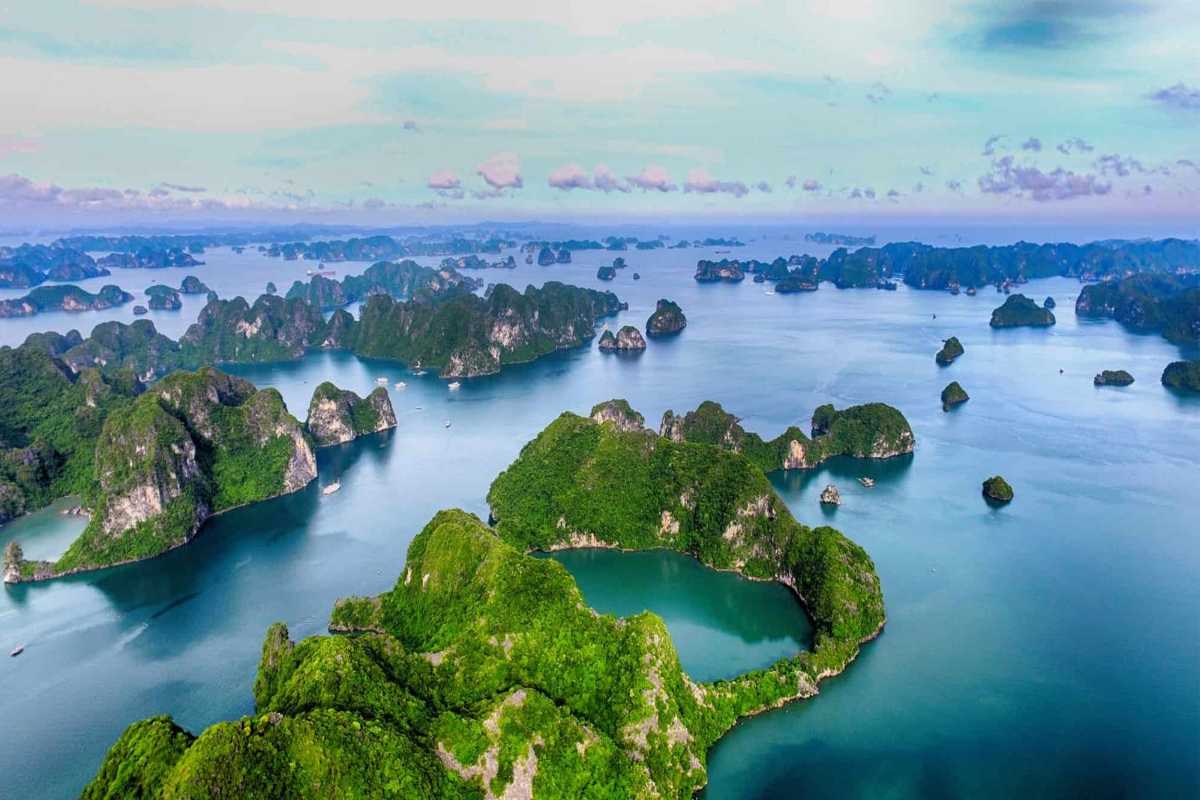
How to Get There: Easy Steps and Options
Getting to Cho Da Islet involves choosing the right boat route and departure point from Ha Long City. There are multiple ways to reach this serene destination, whether via private boat or group tour. Knowing your options helps ensure a hassle-free trip.
By understanding the various transportation methods and piers, you can pick the best fit for your schedule and budget.
Starting from Ha Long City piers: Tuan Chau and Bai Chay
When planning your trip to Cho Da Islet, knowing your departure point is essential. Two main piers serve as gateways: Tuan Chau and Bai Chay. Each offers distinct advantages depending on your preferences and tour type.
- Tuan Chau Pier: Known for its modern facilities and luxury cruise options, it caters well to private tours and high-end experiences. The pier is located on an island with ample parking and amenities.
- Bai Chay Pier: Closer to downtown Ha Long City, it is more accessible for travelers staying in the city center. It typically serves budget-friendly and group tours.
- Tour Types and Departure Times: Some tours exclusively depart from one pier or the other, so check carefully when booking.
- Transport to Piers: Both piers are reachable via taxi or shuttle buses from Ha Long City hotels.
Choosing the right pier will streamline your departure and enhance your overall experience.
Plan your journey by selecting the pier that fits your schedule and tour style best.
Choosing between private boats and group tours
Deciding between a private boat or a group tour to Cho Da Islet depends on your travel style and budget. Understanding the pros and cons of each can help you make an informed choice.
- Private Boats: Provide flexibility with custom itineraries, privacy, and more personalized service. Ideal for families, couples, or groups wanting a tailored experience.
- Group Tours: Cost-effective and social, these tours follow fixed schedules and routes. Great for solo travelers or budget-conscious visitors who prefer guided experiences.
- Price Differences: Private charters generally cost more but can be worth it for the added comfort and freedom.
- Booking Considerations: Group tours often book out quickly during peak season, so reserve early if interested.
Evaluating your preferences will help you select the best option to enjoy your time on Cho Da Islet.
Choose the tour type that matches your needs to ensure a memorable visit.
Tips for booking and timing your trip
Booking your Cho Da Islet tour at the right time can make a significant difference in your experience. Here are practical tips to help you plan effectively.
- Book Early for Peak Seasons: Secure your place online or via trusted agencies well in advance during busy months to avoid disappointment.
- Morning Departures: Early tours often offer cooler weather and less crowded spots on the islet.
- Weekday Visits: Consider weekdays if you prefer a quieter, more relaxed visit.
- Check Tour Inclusions: Verify what is included—some tours cover meals, permits, and equipment, others charge extra.
- Be Flexible in Off-Peak Times: Last-minute bookings may be possible during low season but always confirm availability.
Following these tips will help you plan a smooth and enjoyable trip to Cho Da Islet.
Book smartly and time your visit well to get the most out of your Halong Bay adventure.
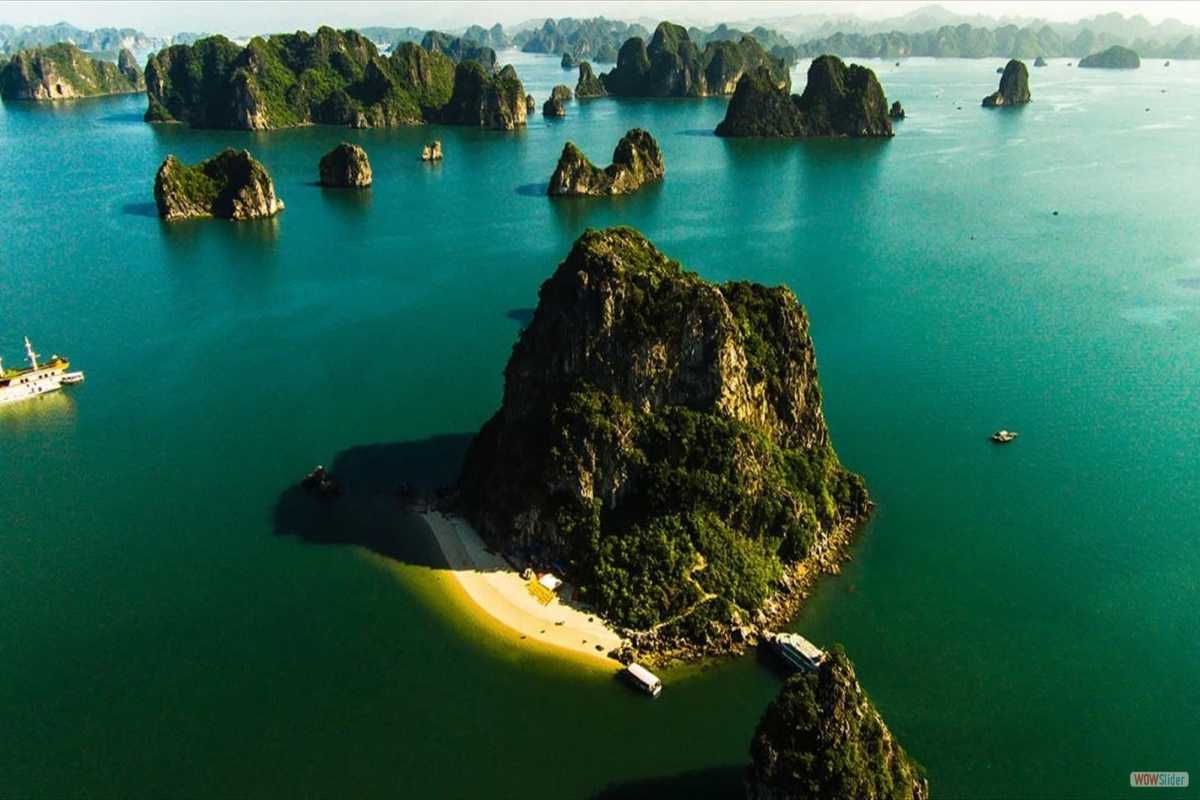
When’s the Best Time to Visit?
Knowing the best time to visit Cho Da Islet can make a big difference in your experience. The weather and crowd levels vary throughout the year in Halong Bay, so planning around these factors ensures you enjoy the islet’s beauty at its best. Whether you prefer sunny days or fewer visitors, understanding the seasonal trends helps you choose the ideal moment for your trip.
Plan your visit with confidence by considering these seasonal insights for Cho Da Islet and Halong Bay.
Weather and seasonal considerations
The climate around Cho Da Islet reflects the larger patterns of Halong Bay, with distinct seasons influencing conditions:
- Dry Season (October to April): Characterized by cool, clear weather and low rainfall. Temperatures range from 15°C to 25°C, ideal for sightseeing and outdoor activities.
- Wet Season (May to September): Warm and humid, with frequent rain showers and occasional typhoons. Temperatures rise to 30°C or higher.
- Typhoon Season (August and September): Strong winds and heavy rains may disrupt travel plans; caution is advised.
- Average Rainfall: Peaks in July and August, making these months less favorable for outdoor tours.
Understanding these patterns helps you select dates that match your weather preferences and activity plans.
Check the Cho Da Islet climate forecasts before booking to ensure the best possible visit.
Avoiding the crowds for a more serene experience
If you value peace and quiet, timing your visit to Cho Da Islet to avoid crowds can greatly enhance your experience. Consider these tips:
- Visit during the shoulder months (April-May, September-October) for fewer tourists and pleasant weather.
- Choose weekdays rather than weekends when local tourism picks up.
- Opt for early morning or late afternoon tours to enjoy calmer waters and softer light.
- Avoid peak holiday periods, especially around Lunar New Year and summer vacations.
These strategies will help you enjoy the tranquil side of Halong Bay and make the most of your time on Cho Da Islet.
Plan your trip during off-peak times to experience the islet’s serene beauty away from the crowds.
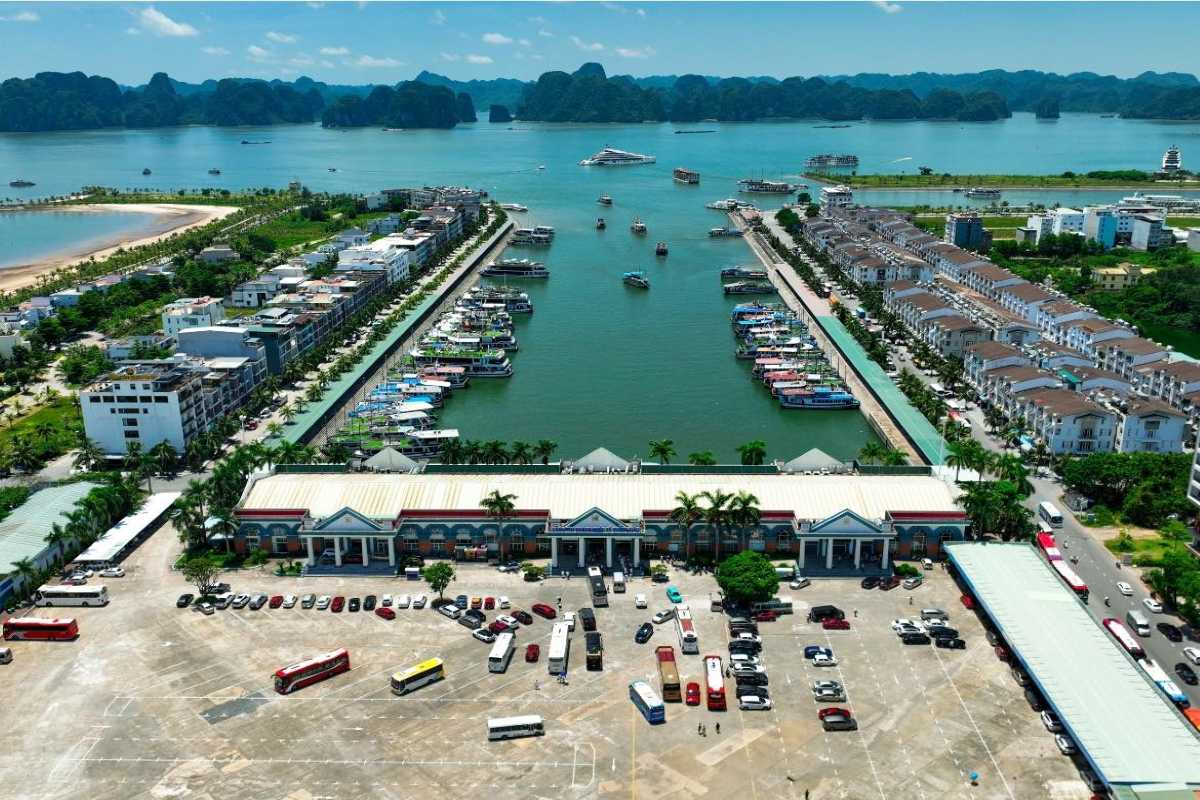
What to Bring and Prepare
Preparing well for your visit to Cho Da Islet ensures a smooth and enjoyable experience. From snorkeling adventures to sun protection, packing the right gear and essentials is key. This guide helps you assemble everything you need for a comfortable day in Halong Bay.
Make your trip hassle-free by packing smart and staying ready for all activities.
Essential gear for snorkeling and sun protection
When planning water activities around Cho Da Islet, having the right gear is vital for safety and comfort.
- Snorkeling Mask and Fins: Ensure a proper fit for clear underwater views and efficient swimming.
- Reef-Safe Sunscreen: Protect your skin without harming marine ecosystems.
- Wide-Brimmed Hat and Sunglasses: Shield yourself from strong tropical sun rays.
- Rash Guard or Swim Shirt: Offers extra sun protection and helps prevent abrasions.
- Water Shoes: Useful for rocky shores and added foot protection.
These items will keep you comfortable and safe during your snorkeling and swimming adventures around Halong Bay.
Prepare your snorkeling gear and sun protection essentials before your visit to Cho Da Islet.
Practical packing tips for a day trip
A well-packed bag can make your day trip to Cho Da Islet hassle-free and enjoyable. Keep these practical tips in mind:
- Lightweight, Quick-Dry Clothing: Ideal for changing weather and water activities.
- Waterproof Bag or Dry Sack: Protects your electronics and valuables from splashes.
- Quick-Dry Towel: Compact and efficient for drying off after swimming.
- Personal Medications and First Aid Kit: Always carry what you need for comfort and safety.
- Reusable Water Bottle: Stay hydrated while reducing plastic waste.
Following this checklist helps ensure you have everything needed for a fun and safe day at Cho Da Islet.
Pack thoughtfully with these Cho Da Islet essentials for an enjoyable trip.
Essential Apps and Tools for Your Cho Da Adventure
Technology can enhance your travel experience by keeping you informed and connected. Consider these helpful apps and tools:
- Offline Maps (e.g., Maps.me): Navigate without internet connection.
- Translation Apps (e.g., Google Translate): Break language barriers with ease.
- Weather Apps (e.g., AccuWeather): Stay updated on local weather conditions.
- Portable Power Bank: Keep your devices charged on the go.
- Waterproof Phone Case: Protects your phone during water activities.
Using these apps and tools can help you stay prepared and comfortable throughout your Halong Bay journey.
Equip yourself with these travel apps and tools to make the most of your Cho Da Islet visit.
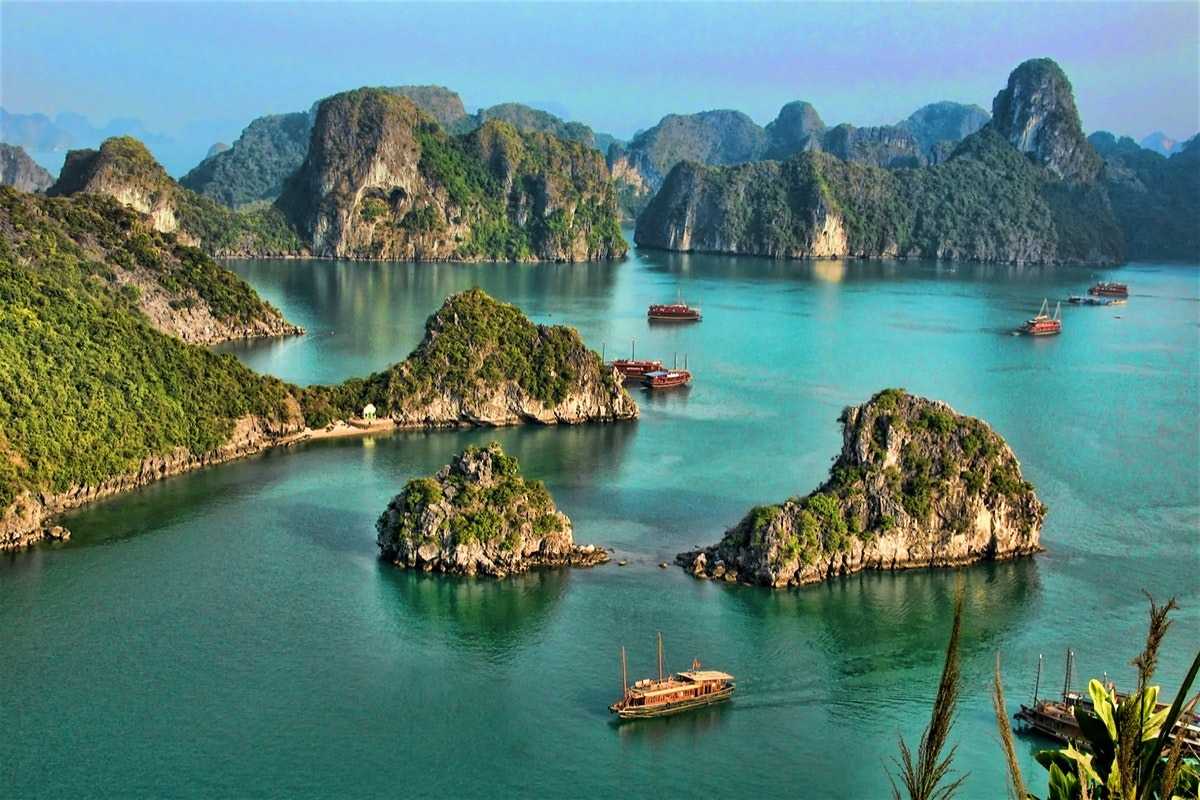
Exploring Activities on and Around Cho Da Islet
There’s plenty to do when you visit Cho Da Islet, offering a mix of exciting adventures and relaxing moments. From underwater exploration to scenic walks, the islet and its surroundings provide activities suited for all interests. Discover the many ways you can immerse yourself in the natural beauty and culture of Halong Bay.
Explore these diverse things to do Cho Da Islet and start planning your ideal day on the water and land.
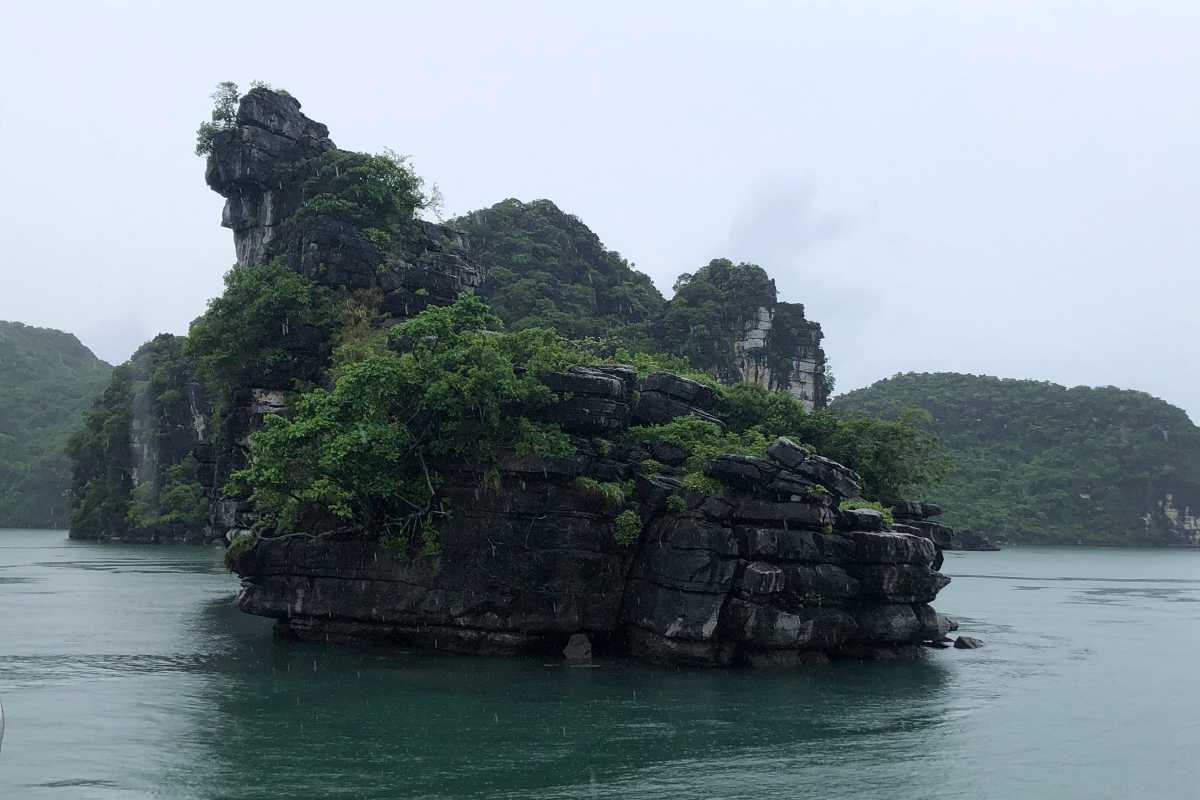
Snorkeling Adventures in Clear Waters
Snorkeling around Cho Da Islet is a must for visitors eager to experience the vibrant underwater world of Halong Bay. The crystal-clear waters and diverse marine life create a captivating environment perfect for both beginners and seasoned snorkelers.
Grab your gear and dive into some of the best snorkeling spots that the bay has to offer.
Best snorkeling spots around the islet
If snorkeling is on your list, these spots near Cho Da Islet are not to be missed:
- Coral Cove: Known for its healthy coral reefs and colorful fish species, offering excellent visibility.
- Hidden Lagoon: A quieter area with calm waters, perfect for leisurely snorkeling and spotting marine creatures.
- East Bay: A popular location where sea turtles and tropical fish are frequently seen.
- Reef Edge: Ideal for exploring diverse coral structures and underwater flora.
These spots provide varied experiences, allowing snorkelers to witness the rich marine biodiversity of Halong Bay.
Plan your snorkeling route to include these prime locations around Cho Da Islet.
Safety tips and recommended equipment
Snorkeling safely ensures you enjoy your adventure without incident. Keep these guidelines in mind:
- Always snorkel with a buddy: Safety in numbers reduces risks.
- Use quality snorkeling gear: Masks and fins should fit well and be well-maintained.
- Avoid touching coral reefs: Protect the fragile ecosystem and avoid injuries.
- Check local conditions: Be aware of currents and weather before entering the water.
- Wear reef-safe sunscreen: Prevent skin damage and protect marine life.
Following these tips keeps both you and the environment safe during your snorkeling trip.
Prepare your equipment and follow safety practices to enjoy Halong Bay snorkeling responsibly.
Anya's Take on the Underwater World
Most Halong Bay tours promise stunning limestone karsts, but my recent trip to Cho Da Islet wasn't just about admiring the majestic rock formations; it was an unexpected dive into a vibrant, secret world beneath the surface, a stark contrast to the above-water grandeur I'd come to expect.
Setting out from Tuan Chau pier, the familiar scent of saltwater and diesel filled the air, mingling with the excited chatter of fellow travelers. As our boat glided towards Cho Da, its distinctive 'stone dog' shape became clearer, evoking a sense of ancient mystery. I admit, I'd packed my snorkeling gear more out of habit than genuine expectation, half-anticipating murky waters or a barren seabed. My prior snorkeling experiences in other crowded tourist spots had often been underwhelming, a quick dip amidst sparse marine life. But as we neared Cho Da, the water around the islet shifted from a deep jade to an impossibly clear turquoise, a promising shimmer under the midday sun. My anticipation, initially lukewarm, began to bubble.
The moment I slipped into the cool, embracing water, any lingering doubts vanished. It was like stepping into a living painting. The first thing that struck me was the sheer clarity – I could see individual grains of sand on the seabed, dozens of feet below. Schools of shimmering silver fish, no bigger than my thumb, darted past my mask, their scales catching the sunlight like scattered jewels. The water was surprisingly warm, a gentle caress against my skin, and the silence, broken only by the rhythmic sound of my own breathing, was profound.
I kicked gently, propelled by a newfound curiosity, and soon found myself hovering above a breathtaking coral garden. Unlike some bleached reefs I'd seen, this one pulsed with life and color. Deep purple brain corals nestled next to vibrant orange fan corals, interspersed with swaying anemones housing shy clownfish. A kaleidoscope of smaller reef fish, electric blue, canary yellow, and striped, weaved in and out of the formations, completely unconcerned by my presence. One moment, a lone, iridescent parrotfish glided by, its vibrant green scales almost glowing; the next, a delicate butterflyfish with intricate patterns danced around a stony outcrop. I remember the tactile sensation of the water gently pushing against me as I floated, completely immersed in this otherworldly ballet. It wasn't just seeing the fish; it was being among them, an honored, silent guest in their world. The biggest surprise was encountering a small, bright blue starfish clinging to a rock, its texture so intricate and delicate, a testament to the thriving ecosystem here. The tranquility was almost meditative, completely washing away the hustle and bustle of daily life.
My expertise here comes from having snorkeled in various parts of the world, and I can confidently say that Cho Da Islet offers a genuinely pristine and vibrant underwater encounter, often overlooked in favor of the more famous above-water views. The limited number of boats allowed near the islet helps preserve this delicate ecosystem, ensuring an undisturbed experience.
Here are some actionable takeaways from my visit:
- Go Early: While it’s less crowded than other spots, arriving on one of the first boats ensures even more serene water and undisturbed marine life viewing.
- Bring Your Own Mask & Snorkel: While tours often provide equipment, having your own well-fitting gear significantly enhances comfort and clarity. Consider a full-face snorkel mask for ease of breathing if you're a beginner.
- Reef-Safe Sunscreen is a Must: Protect yourself and the delicate coral. The sun can be intense, even underwater.
- Look, Don't Touch: This is critical. The coral reefs are incredibly fragile. Observe from a respectful distance to preserve them for future generations.
- Underwater Camera: You'll regret not capturing the vivid colors! Even a waterproof phone case can work wonders.
My snorkeling experience at Cho Da Islet wasn't just an activity; it was a profound connection with nature, a reminder of the hidden wonders that lie beneath the surface. It was more than worth the trip.
Recommendation: If you're seeking an authentic, peaceful, and truly captivating underwater encounter in Halong Bay, make sure Cho Da Islet is on your itinerary. Don't just admire the stone dog from above; dive in and discover its living, breathing secret world. You'll leave with memories as clear as the water itself.

Relaxing and Sightseeing on the Islet
Even if you’re not keen on water activities, Cho Da Islet offers plenty for those who love to unwind and explore on foot. The islet’s natural charm and scenic beauty create the perfect backdrop for relaxing moments and leisurely sightseeing in Halong Bay.
Discover how to soak in the peaceful atmosphere and take in the stunning landscapes during your visit to Cho Da Islet.
Walking routes and photo opportunities
Explore Cho Da Islet on well-marked walking paths that wind through its natural features:
- Main Coastal Trail: Offers sweeping views of limestone cliffs and emerald waters.
- Sunrise Viewpoint: Perfect for early risers looking to capture the first light over Halong Bay.
- Hidden Cove Path: Leads to quieter spots ideal for photography and quiet reflection.
- Rocky Overlook: A dramatic vantage point showcasing the iconic “stone dog” formation.
These routes provide diverse photo opportunities to capture the beauty and serenity of Cho Da Islet.
Take your camera along and follow these paths to experience the islet’s best views.
Finding quiet spots for relaxation and picnics
If you want a peaceful retreat, Cho Da Islet has secluded areas ideal for relaxation and enjoying a picnic:
- Secluded Beach Nooks: Small sandy coves shielded from the breeze.
- Shaded Forest Pockets: Quiet spots under tropical foliage perfect for resting.
- Cliffside Benches: Rest areas with panoramic views of the bay.
- Grassy Clearings: Open spaces where you can spread a picnic blanket.
These tranquil locations let you escape crowds and soak in the natural calm of Halong Bay.
Find your perfect quiet spot and enjoy a serene picnic surrounded by nature.
Getting Around the Islet: Footpaths and Hidden Nooks
Navigating Cho Da Islet is easy if you know the terrain and trails:
- Rocky and uneven terrain: Wear sturdy shoes for safety.
- Marked footpaths: Well-maintained trails guide you through key sights.
- Secret viewpoints: Off-path areas reward explorers with unique perspectives.
- Accessible sections: Some areas are easy to walk for visitors with moderate mobility.
Knowing the terrain helps you confidently explore and discover hidden gems on the islet.
Plan your route using these trail tips to make the most of your Cho Da Islet adventure.
Robert's Serene Escape: A Photo Journey
Most travelers rush through Halong Bay, ticking off famous caves and bustling islands, but my quest was different. I yearned for a quiet corner, a place where the grandeur of nature could truly be absorbed without the jostle of crowds. Cho Da Islet, with its promise of tranquility and unique formations, became my photographic muse, offering a serene escape unlike any other spot I'd explored in the bay.
My journey began with the early morning mist still clinging to the karsts, lending an ethereal quality to the seascape. As our smaller, more intimate boat puttered away from the main hub, the air grew noticeably cooler and the cacophony of tour groups faded into a peaceful hush. My camera, a trusted companion on countless adventures, felt lighter in my hands, almost eager for the stillness that lay ahead. Anticipation built with each gentle ripple, not for a grand spectacle, but for the quiet moments, the subtle interplay of light and shadow on ancient stone. I'd read about Cho Da's serene atmosphere, but experiencing it firsthand, feeling the vast, hushed expanse of the bay open up around us, was a different sensation entirely – a deep, calming breath.
As we neared Cho Da, the 'stone dog' emerged, not as a static landmark, but as a character bathed in the soft, diffused light of dawn. I carefully composed my shots from the boat, playing with angles to emphasize its unique profile against the dramatic backdrop of the bay. Later, on the islet itself, the exploration felt less like sightseeing and more like a meditative walk. The sun began to climb, painting the limestone cliffs in warm, golden hues. I found myself drawn to a small, almost hidden coved pocket of sand that seemed to swallow sound, offering absolute quietude. Here, the water, mirroring the sky, was a mesmerizing canvas of blues and greens, reflecting the ancient stone formations with perfect clarity.
I spent what felt like hours, but was likely just a short while, simply observing. I wasn't just taking photos; I was feeling the light shift, listening to the gentle lapping of the waves against the rock, breathing in the clean, salty air. My favorite shots came from this peaceful interlude: macro details of lichen clinging to the weathered rock, the intricate patterns etched by millennia of erosion, and wide-angle views that captured the immense scale of the bay’s beauty, framed by the islet’s natural curves. The challenge was in translating that profound sense of tranquility into an image, a task that demanded patience and a deep connection to the environment. The joy was in seeing that stillness reflected in my lens, capturing moments of perfect harmony. This focused, quiet time allowed me to truly connect with the islet, far beyond a superficial glance.
My firsthand experience reinforced that Cho Da Islet is an unparalleled location for peaceful exploration in Halong Bay, particularly for photographers or anyone seeking genuine solace. The relative lack of crowds allows for a level of immersion that's rare in such a popular destination.
Here are my personal Cho Da Islet photography tips and recommendations:
- Golden Hour is Your Friend: Aim for early morning or late afternoon visits. The soft, warm light drastically enhances the limestone's texture and reduces harsh shadows.
- Embrace the Wide Angle: Cho Da's scale and its setting amidst the vast bay demand a wide-angle lens to truly capture the grandeur.
- Look for Reflections: The calm waters around the islet are perfect for capturing stunning reflections of the karsts and the stone dog formation. Pay attention to the water's surface.
- Don't Forget the Details: While the grand vistas are captivating, zoom in on the unique geological textures, the small pockets of vegetation, or even the water's gentle ripples for compelling close-ups.
- Silence is Golden: If you can, choose a tour that offers a more secluded experience or allows for ample quiet time. This helps you notice the subtle beauty and find your unique compositions without distraction.
My photo journey to Cho Da Islet was more than just adding images to my collection; it was a deeply personal encounter with the quiet majesty of Halong Bay, a testament to the power of slow travel and dedicated observation.
Recommendation: For photographers or anyone craving a truly tranquil experience in Halong Bay that goes beyond the usual tourist trail, Cho Da Islet is an absolute must-visit. Dedicate time to its serene beauty, bring your camera, and let the quiet moments inspire your own unforgettable photo journey. You won't regret seeking out this peaceful corner of paradise.

Nearby Attractions to Add to Your Itinerary
When visiting Cho Da Islet, you have the perfect opportunity to explore several other stunning sites in Halong Bay. Including nearby attractions in your itinerary enriches your experience and lets you discover the full diversity of this UNESCO World Heritage site. Here are some must-see spots close to Cho Da Islet to help you plan a memorable trip.
Titov Island’s panoramic views
Titov Island is famous for its breathtaking panoramic viewpoints overlooking Halong Bay. The island’s summit offers sweeping vistas of the emerald waters and limestone karsts that stretch endlessly. Many visitors combine a trip to Cho Da Islet with a stop at Titov Island to capture stunning photographs and enjoy its sandy beaches.
This scenic island provides a perfect balance of adventure and relaxation to complement your visit to Cho Da Islet.
Exploring Sung Sot Cave and floating fishing villages
Nearby Cho Da Islet, Sung Sot Cave—also known as Surprise Cave—is a spectacular natural wonder featuring impressive stalactites and stalagmites inside a vast cavern. Exploring the cave offers a glimpse into Halong Bay’s geological marvels.
In addition, floating fishing villages nearby provide a unique cultural experience where you can witness traditional life on the water, with colorful boats and local craftsmanship on display.
Including these destinations in your itinerary adds depth and cultural richness to your Halong Bay adventure.
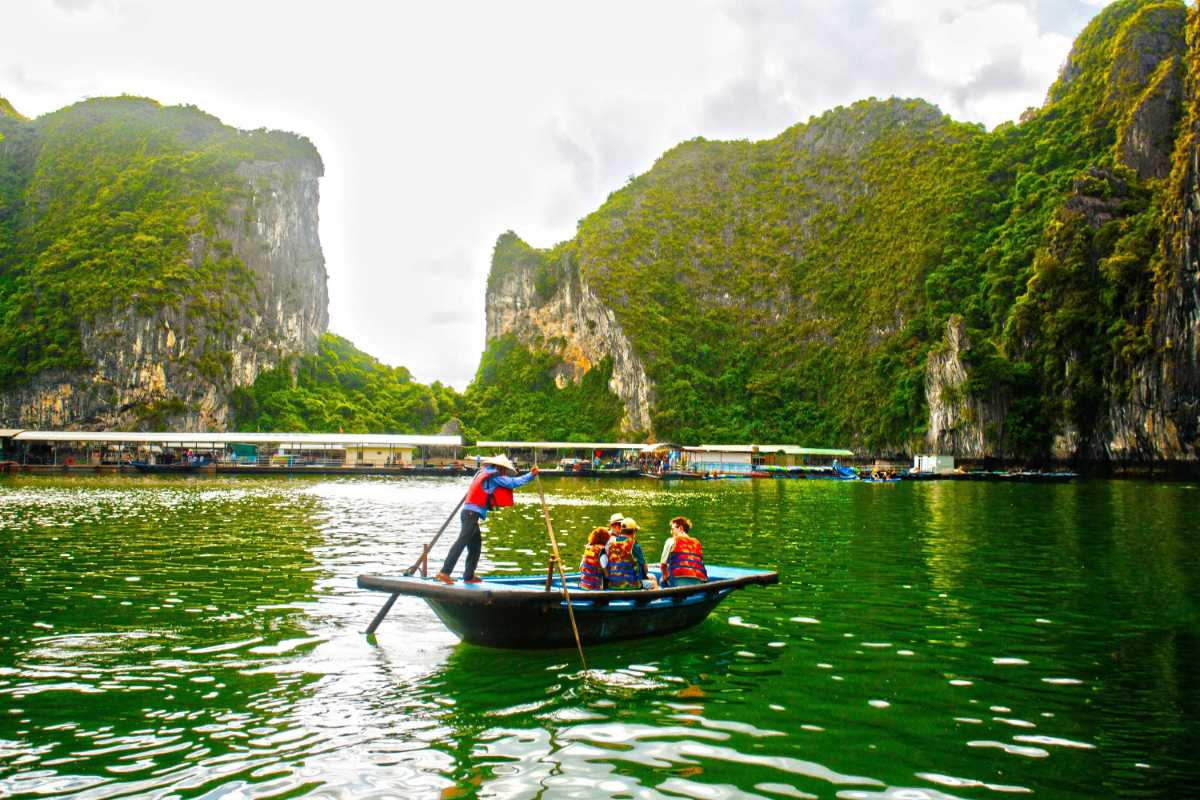
Beyond the Basics: Deeper Dives into Cho Da Islet
Explore the rich natural tapestry and hidden wonders of Cho Da Islet that make it a paradise for nature lovers and photography enthusiasts. This section offers expert insights into the unique ecosystem, wildlife, and visual opportunities that set this islet apart within Halong Bay.
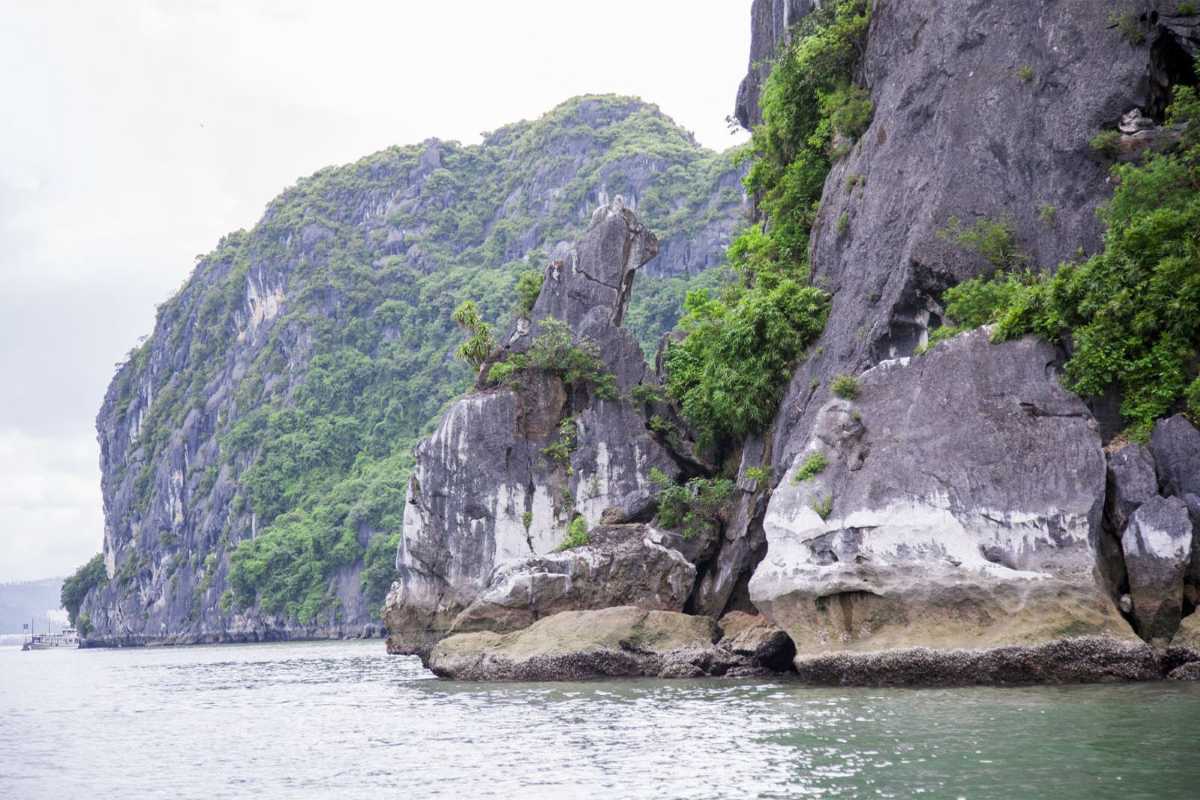
The Flora and Fauna of Cho Da: A Nature Lover's Guide
The natural environment around Cho Da Islet thrives with diverse species both above and below the water’s surface. From vibrant coral reefs to coastal birds and unique plant life, the islet offers a living laboratory for enthusiasts eager to observe the richness of Halong Bay’s biodiversity.
Identifying common marine life and coral species
Explore the underwater residents of Halong Bay near Cho Da Islet. The clear waters reveal an array of colorful fish, crustaceans, and various coral types, each playing a crucial role in the marine ecosystem. Many species here are protected due to their ecological importance.
- Vibrant reef fish: Colorful species commonly spotted during snorkeling excursions
- Crustaceans: Lobsters and crabs hiding among rocks and coral
- Coral species: Both hard and soft corals contributing to reef health
- Conservation status: Awareness of protected species and habitats
These insights enrich your snorkeling experience and underscore the need to protect this delicate environment.
Observing coastal birds and unique plant life
Beyond the marine world, Cho Da Islet hosts a variety of coastal birds that nest along its cliffs and shores. The vegetation here includes distinctive tropical plants that thrive in the limestone-rich soil and salty air.
- Coastal bird species: Seagulls, terns, and migratory birds commonly seen
- Unique plants: Hardy shrubs and cliffside flora adapted to island conditions
- Birdwatching tips: Best times and locations to spot wildlife on the islet
These natural features add layers of interest for visitors who appreciate both wildlife and botany.
David's Wildlife Spotting Log
When I planned my trip to Halong Bay, my mind was filled with images of towering limestone karsts and emerald waters. I anticipated breathtaking vistas, certainly, but what I hadn't fully prepared for was the vibrant, hidden world of wildlife spotting that awaited me, particularly around the tranquil shores of Cho Da Islet. Most guides focus on the grand scale, but for an avid nature enthusiast like myself, the real magic was in the details, the fleeting glimpses of life beneath the waves and flitting among the cliffs.
My day began with the familiar sounds of a boat engine churning, gradually fading as we ventured deeper into the bay. As we approached Cho Da Islet, the air noticeably freshened, and a different kind of quiet settled in – one filled with the distant cries of seabirds and the gentle lapping of water. I grabbed my binoculars and positioned myself at the bow, my senses on high alert. The moment we dropped anchor near the islet, I noticed a flurry of activity. Small, dark shapes zipped across the water's surface – likely swiftlets, a common sight here, but their acrobatic flight was mesmerizing. I felt a surge of excitement; this wasn't just a scenic cruise, it was an opportunity for genuine natural discovery.
Donning my mask and snorkel, I slipped into the surprisingly warm and wonderfully clear water, determined to log as many observations as possible. The underwater world around Cho Da was a revelation. My first entry in the mental log was a school of iridescent blue damselfish, darting in and out of a particularly vibrant patch of staghorn coral. The coral itself was a spectacle: deep purples, soft greens, and a surprising coral-pink, all teeming with tiny, darting forms. I kept my movements slow and steady, trying not to disturb the delicate ecosystem. Further along, near a submerged rock face, I spotted a striking black-and-white banded sea snake gracefully gliding through the water, its patterns a stark contrast to the colorful backdrop. It was a cautious, respectful distance, but thrilling nonetheless. Later, while observing from the boat near a less frequented cove, I managed to get a clear view of a Great Egret perched regally on a rocky outcrop, its stark white plumage contrasting beautifully with the green foliage, patiently waiting for a meal. The feeling of seeing these creatures in their natural habitat, undisturbed, was a profound joy, far more enriching than any postcard view.
This firsthand wildlife spotting experience cemented my belief that Cho Da Islet is an underrated gem for nature lovers in Halong Bay. Its relatively untouched nature means the marine and bird life are more abundant and less skittish. My expertise as an amateur naturalist tells me that consistent responsible tourism here is key to maintaining this precious biodiversity.
Here are my actionable takeaways for your own wildlife spotting adventure at Cho Da Islet:
- Bring Good Optics: Binoculars for birdwatching from the boat and a high-quality snorkel mask (or even an underwater camera) are essential for seeing details.
- Go Slow & Quiet: Whether in the water or on the boat, slow movements and keeping noise to a minimum increase your chances of spotting shy creatures.
- Look for Patches of Coral: These are biodiversity hotspots. Focus your snorkeling efforts around healthy coral gardens, keeping a respectful distance.
- Scan the Cliffs: Don't just look at the water. The limestone cliffs are home to various birds and unique plant life; keep an eye out for movement.
- Research Local Species: A quick search for "Halong Bay marine life" or "birds of Halong Bay" before your trip can help you identify what you see.
- Respect Their Space: Never chase, touch, or feed marine or bird life. Observe from a distance to minimize disturbance.
My wildlife spotting log from Cho Da Islet is filled with vibrant memories, a testament to the incredible natural richness of Halong Bay beyond its famous scenery.
Recommendation: If you're a nature enthusiast or simply curious about the living heart of Halong Bay, allocate dedicated time for wildlife spotting around Cho Da Islet. It's a truly rewarding snorkeling experience in Halong Bay, offering unique marine encounters and birdwatching opportunities that will deepen your appreciation for this magnificent natural wonder.

Capturing Cho Da: Photography Tips and Prime Spots
Capturing stunning images of Cho Da Islet requires an understanding of its unique light conditions and best viewpoints. Whether you're a beginner or seasoned photographer, knowing when and where to shoot can make all the difference. This section offers practical advice to help you create unforgettable photographs that showcase the islet’s natural beauty.
Best angles and lighting for the Stone Dog Islet
To capture the iconic Stone Dog Islet at its best, timing and perspective are key. Early morning and late afternoon, especially during the golden hour, offer warm, soft lighting that enhances the islet’s textures and colors.
- Golden hour glow: The warm light during sunrise and sunset creates dramatic shadows and highlights.
- Sunrise shots: Capture the islet silhouetted against a vibrant sky from the east-facing shore.
- Afternoon lighting: Softens the limestone textures and offers clear, vibrant water reflections.
- Unique perspectives: Shoot from various angles around the boat or shoreline for varied compositions.
- Avoid midday sun: Harsh light can wash out colors and create unflattering shadows.
These tips help you capture the essence of the Stone Dog Islet in all its scenic glory.
Drone photography regulations and considerations
Flying drones around Halong Bay and Cho Da Islet requires understanding local rules to avoid fines and respect protected areas. Ensure you follow regulations and practice responsible drone use to protect this fragile environment.
- Permit requirements: Check if you need a drone permit from local authorities before flying.
- No-fly zones: Certain areas around Halong Bay are restricted to protect wildlife and visitors.
- Respect privacy: Avoid flying over boats or inhabited areas without permission.
- Battery and safety: Maintain visual contact with your drone and avoid flying in poor weather.
- Responsible use: Keep drones away from nesting birds and coral reefs to minimize disturbance.
Being informed about drone rules ensures your photography is both legal and environmentally considerate.
Emily's Picture-Perfect Moments
Halong Bay is undeniably photogenic, a landscape artist's dream. But when it came to capturing truly unique, picture-perfect moments, I found my sanctuary at Cho Da Islet. Unlike the bustling tourist hotspots where jostling for a clear shot is the norm, Cho Da offered a serene canvas, allowing me to slow down, compose, and truly capture the essence of its unique beauty. My goal wasn't just pretty photos, but images that told a story, and Cho Da delivered beyond expectation.
My photographic journey began before dawn, a conscious decision fueled by countless hours spent researching the elusive "golden hour" in Halong Bay. Leaving the main harbor in the pre-dawn quiet was a stark contrast to the usual daytime frenzy. The air was cool, carrying the faint scent of salt and damp earth, and a thick, pearlescent mist still draped the iconic karsts, transforming them into ghostly silhouettes. This ethereal atmosphere set the perfect tone for what was to come. As our smaller vessel approached Cho Da, the first rays of sun began to kiss the very tips of the limestone, painting them in hues of soft rose and apricot. My heart quickened; this was the light I had dreamed of, the light that breathes life into landscapes.
Once we were alongside the islet, I focused on capturing its distinctive 'stone dog' shape. From the boat, I experimented with angles, trying to emphasize its powerful, guardian-like presence. The real magic happened when we got closer. I found my favorite spot on a smooth, flat rock near the water's edge, partially shaded by the islet's towering form. Here, the water was so still, it acted as a perfect mirror, creating stunning reflections of the formations and the ever-changing sky. It was here that I truly felt a connection with the landscape. I spent time observing the subtle dance of light, the way the sun would momentarily illuminate a patch of moss on the rock, or how a single, resilient plant clung to the sheer cliff face.
The main challenge was the constantly changing light, especially as the morning progressed. Clouds would drift, subtly altering the scene, requiring quick adjustments to my camera settings. Another delightful surprise was how the calm waters allowed for incredible clarity, revealing underwater details even from above the surface, offering unique photo opportunities of shimmering reflections and vibrant marine life just below. The pure tranquility of the place was a revelation; without the constant distractions of large crowds, I could truly immerse myself in the art of seeing, allowing for more thoughtful compositions and a deeper emotional resonance in my shots. It wasn't just about clicking the shutter; it was about truly experiencing the moment through my lens.
My exploration confirmed that Cho Da Islet is arguably one of the best photo spots in Halong Bay, especially if you're seeking serenity and unique perspectives. My experience as a travel photographer tells me that patience and an understanding of light are your greatest assets here.
Here are my personal Cho Da Islet photography tips for capturing your own unforgettable images:
- Embrace Golden and Blue Hours: Seriously, this is non-negotiable. The light is soft, warm, and creates incredible depth. Arrive just before sunrise or stay until sunset if your tour allows.
- Look for Reflections: The calm waters around Cho Da are perfect for mirror-like reflections of the karsts. Get low to the water for the best effect.
- Focus on the Details: While the grand vistas are stunning, don't forget the textures of the limestone, the tenacious plants growing from cracks, or the subtle ripples on the water. These add depth to your story.
- Use a Polarizing Filter: This can help cut through glare on the water, making colors more vibrant and revealing details below the surface. Essential for landscape photography in Halong Bay.
- Protect Your Gear: Saltwater and humidity are tough on electronics. Invest in a good dry bag and consider silica gel packets for your camera bag.
- Experiment with Angles: Don't just shoot head-on. Try shooting up at the karsts from a low angle, or look for natural frames created by other rock formations.
My journey through Cho Da Islet was filled with picture-perfect moments, each one a testament to the raw, untouched beauty of Halong Bay when experienced with intention and a camera in hand.
Recommendation: For any aspiring photographer or visual storyteller visiting Halong Bay, I wholeheartedly recommend dedicating significant time to Cho Da Islet. It's not just a beautiful place; it's a peaceful sanctuary that will elevate your Halong Bay photography to new heights, allowing you to capture moments that are truly your own.

Understanding Cho Da Islet Entrance Fee, Costs, and Regulations
Visiting Cho Da Islet means being part of the Halong Bay marine park, where entrance fees and regulations help protect this stunning environment. Understanding the costs and rules beforehand will help you plan your trip smoothly and travel responsibly.
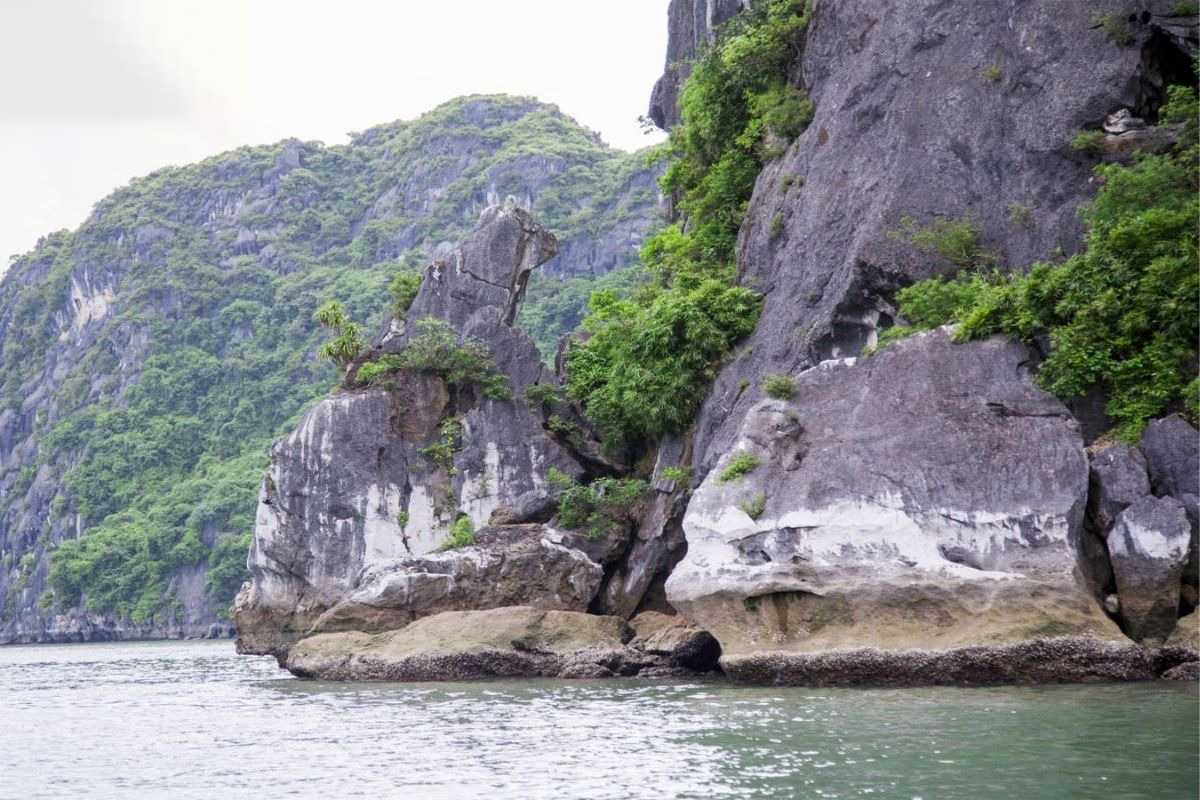
What You Need to Know About Entrance Fees
When planning your visit, it’s essential to understand the fee structure for Cho Da Islet. Entrance costs contribute to the conservation of the Halong Bay marine park, ensuring this natural wonder is preserved for future generations.
Marine park permits and included fees
Cho Da Islet is part of the Halong Bay marine park, which requires visitors to hold a valid permit. Usually, this fee is included in tour packages, but it’s important to verify before booking.
- Permit fee: Covers access to the marine park and helps fund conservation efforts.
- Inclusion in tours: Most organized tours bundle the permit fee with their prices.
- Separate purchase: For independent travelers, permits might need to be bought separately at entry points.
- Conservation support: Fees contribute to protecting coral reefs, wildlife, and maintaining park facilities.
Being aware of permit requirements helps you avoid surprises and supports eco-friendly travel.
Pricing ranges for tours and equipment rentals
Tour prices around Cho Da Islet vary based on the type of excursion and included amenities. Equipment rentals such as snorkeling gear or kayaks may add to your expenses if not included.
- Half-day tours: Typically range from $20 to $50 per person depending on inclusions.
- Full-day tours: Can cost $50 to $100 or more, often including meals and activities.
- Private charters: Higher prices but offer personalized experiences.
- Equipment rentals: Snorkeling gear and kayaks may cost between $5 and $15 per item if not provided.
- Budget tips: Book in advance and compare packages to find the best deal.
Planning your budget with these ranges in mind ensures a comfortable and enjoyable visit.

Important Rules to Respect the Environment
Respecting the natural beauty of Cho Da Islet and the larger Halong Bay area is vital for preserving its unique ecosystem. By following environmental rules and practicing responsible tourism, you help protect this stunning destination for future visitors.
No littering and coral reef protection
Preserving the natural environment means strictly avoiding behaviors that damage it. When visiting Halong Bay and Cho Da Islet, make sure to:
- Avoid littering: Dispose of all trash properly, and carry out any waste you bring in.
- Do not touch coral reefs: Physical contact damages delicate coral ecosystems essential to marine biodiversity.
- Follow designated paths: Stay on marked trails to protect fragile vegetation and prevent erosion.
- Use reef-safe sunscreen: Traditional sunscreens contain chemicals harmful to marine life.
- Participate in conservation efforts: Support local clean-up initiatives or eco-friendly tours when possible.
Being mindful of these rules helps keep Halong Bay pristine and thriving.
Guidelines for swimmers and snorkelers
To enjoy water activities safely and respectfully around Cho Da Islet:
- Stay within designated swimming and snorkeling zones to protect marine habitats.
- Avoid disturbing marine animals or their habitats.
- Follow instructions from guides and safety personnel carefully.
- Use eco-friendly equipment and avoid anchoring boats on reefs.
- Do not feed fish or wildlife, as this disrupts natural behaviors.
These guidelines ensure your safety and help conserve the delicate underwater world.
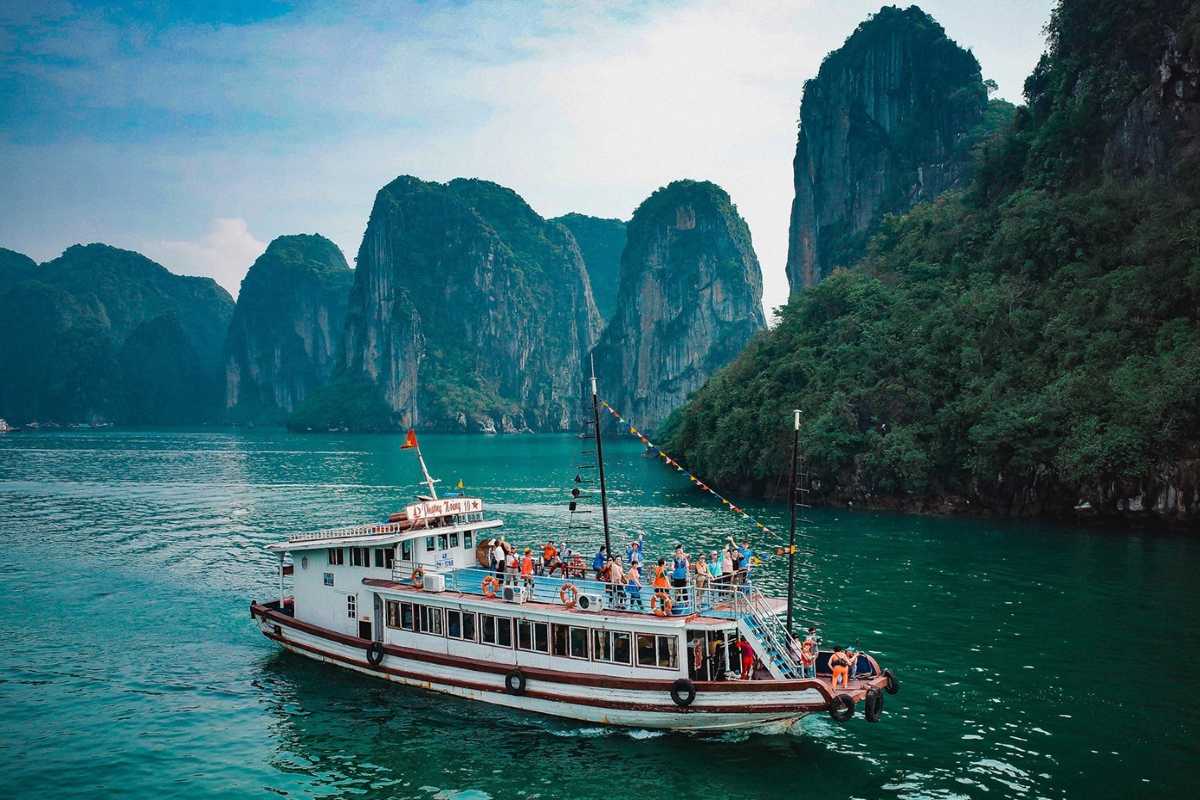
Seasonal Pricing and Booking Tips
Understanding how pricing changes throughout the year and learning effective booking strategies can help you make the most of your visit to Halong Bay and Cho Da Islet without overspending. Being aware of seasonal fluctuations and knowing when to book ensures you get the best value and availability for your trip.
How prices fluctuate throughout the year
The cost of tours and accommodations around Halong Bay and Cho Da Islet varies significantly depending on the season. Understanding these fluctuations helps you plan your budget wisely.
- Peak Season (October to April): Expect higher prices due to favorable weather and increased tourist demand. Prices for tours and accommodation can be up to 30% higher.
- Shoulder Season (May and September): Moderate pricing with fewer crowds. This period offers a good balance between cost and weather conditions.
- Low Season (June to August): Prices drop considerably but weather can be hot and humid with occasional rain. Many operators offer discounts during this period.
Being aware of these seasonal changes helps you choose the best time to visit based on your budget and preferences.
Booking in advance versus last-minute options
Choosing when to book your Halong Bay tour, especially for Cho Da Islet, can impact both price and availability. Here are some factors to consider:
- Booking in advance: Provides greater availability and often better prices, especially during peak season. Recommended for private tours and larger groups.
- Last-minute bookings: Sometimes offer discounts but come with risk of limited options, particularly in busy periods. Best for flexible travelers.
- Use trusted online platforms or book through reputable operators like Asia Travel Links for secure transactions and up-to-date information.
Evaluate your travel flexibility and plan accordingly to secure the best deals.
Maximizing Your Budget: Smart Spending Tips
Traveling to Halong Bay doesn’t have to break the bank. Use these tips to stretch your budget and avoid surprises:
- Consider package deals that combine tours, accommodation, and meals for cost savings.
- Eat at local eateries rather than on tourist boats to enjoy authentic cuisine at lower prices.
- Negotiate prices for souvenirs and additional services but always fairly.
- Be aware of hidden costs such as equipment rental fees or optional excursions.
- Book through reliable providers like Asia Travel Links to avoid scams and ensure value.
Smart budgeting helps you enjoy your Cho Da Islet visit without financial stress.

Staying Safe and Comfortable During Your Trip
Traveling in Halong Bay offers stunning experiences, but staying safe and comfortable is essential to fully enjoy your trip. From managing health concerns like seasickness to understanding emergency procedures, being prepared boosts your confidence and wellbeing on the water.

Health and Safety Advice on the Water
Enjoying the waters of Halong Bay requires taking some simple health and safety precautions. Knowing what to expect and how to prepare helps you stay comfortable and avoid common travel issues such as seasickness or dehydration.
Handling seasickness and hydration tips
Seasickness can affect many travelers on boats in Halong Bay, but there are several ways to prevent and manage it effectively. Staying hydrated is equally important in the tropical climate.
- Take preventive medication or use natural remedies like acupressure bands before boarding.
- Focus on the horizon to reduce motion sickness symptoms.
- Stay well hydrated by drinking plenty of water throughout your trip.
- Avoid heavy meals or alcohol before and during boat rides.
- Bring snacks and ginger candies, which can soothe nausea.
By preparing ahead with these tips, you can minimize seasickness and stay refreshed throughout your Halong Bay adventure.
Emergency procedures and local assistance
Knowing what to do in case of emergencies during your Halong Bay trip is crucial for your safety and peace of mind.
- Keep a list of emergency numbers handy, including local rescue and medical services.
- Inform your tour operator immediately if you or someone else needs urgent medical help.
- Learn basic first aid steps and carry a small first aid kit.
- Understand the location of nearest hospitals or clinics accessible from your tour route.
- Follow instructions from local authorities and boat crew during emergencies.
Being informed and prepared can make all the difference in unexpected situations.
Liam's Seasickness Survival Guide
The turquoise waters of Halong Bay are legendary, a dream destination for many. But for someone like me, prone to the dreaded motion sickness, the thought of days on a boat can quickly turn that dream into a potential nightmare. My visit to Cho Da Islet, while utterly stunning, came with its own personal challenge: seasickness. I went in armed with a few basic remedies, but facing the gentle swell of the bay taught me some real-world lessons. If you're like me and your stomach does somersaults at the mere mention of a boat, consider this your hard-won survival guide.
The morning started with a mix of excitement and a knot of apprehension in my gut. As we boarded our tour boat from the pier, the scent of the diesel mixed with the humid air, already a subtle trigger. I immediately headed for the open-air upper deck, determined to get as much fresh air as possible. As the boat chugged out of the bustling harbor and into the more open waters of the bay, the gentle bobbing began. For the first hour, gazing at the majestic karsts, I felt fine. The beauty was a powerful distraction. But as we circled towards Cho Da Islet, the boat slowed, paused, and then gently pivoted, and that's when the familiar, insidious wave of nausea started to creep in. My stomach churned, my forehead grew clammy, and the vibrant greens of the water began to swirl ominously. I thought, "Here we go again." The idyllic scene around me, including the distinct shape of Cho Da, seemed to mock my inner turmoil.
I tried everything: staring at the horizon (my go-to trick), nibbling on a plain cracker, even trying to engage in conversation to distract myself. Nothing seemed to fully quell the rising tide of discomfort. The biggest challenge was the feeling of being trapped on the boat, far from solid ground. The thought of missing out on snorkeling at Cho Da Islet because of my queasy stomach was infuriating. It was then that a kind crew member noticed my pale face. He gestured towards a quiet spot at the very back of the boat, near the water line, and offered me a small, peeled ginger slice. Surprisingly, this, combined with closing my eyes for a few minutes and focusing purely on the rhythm of my breath, started to work. The rolling sensation didn't disappear entirely, but it became manageable. It was a small, unexpected act of kindness that made a huge difference. Getting into the cool water for snorkeling around Cho Da was a bizarre but effective remedy – being in the water felt more stable than being on it, providing a strange sense of relief as I focused on the vibrant marine life below.
My journey taught me that while seasickness can be a major hurdle, it doesn't have to ruin your Halong Bay adventure. Through trial and error, I've gathered some insider tips that truly help. My expertise in battling motion sickness, unfortunately gained through extensive personal experience, allows me to share truly practical advice.
Here's my seasickness survival guide for your Halong Bay trip:
- Prioritize a Good Spot: As soon as you board, head for the middle of the boat, which experiences less motion, or the open-air deck. Avoid enclosed cabins if possible.
- Fix Your Gaze: Keep your eyes fixed on the horizon or a distant, stationary point. This helps stabilize your inner ear.
- Ginger is Your Friend: Whether it's ginger chews, ginger ale (real ginger, not just flavor), or a simple slice of fresh ginger, this natural remedy can work wonders.
- Stay Hydrated (but Wisely): Sip water frequently, but avoid sugary drinks or excessive alcohol. Plain crackers or dry toast can help settle your stomach.
- Avoid Strong Smells: The scent of diesel, food, or even strong perfumes from other passengers can exacerbate nausea. Position yourself away from these.
- Consider Over-the-Counter Meds: If you're very prone, take dimenhydrinate (Dramamine) or meclizine (Bonine) at least an hour before boarding. Consult your doctor if unsure.
- Fresh Air is Key: Don't underestimate the power of a steady breeze. Stay on an open deck if possible.
- Get In The Water: If you're at a spot like Cho Da Islet, getting into the water for a swim or snorkel can sometimes alleviate symptoms as your body adjusts to being fully immersed rather than passively floating.
Battling seasickness in Halong Bay might have been an unexpected part of my trip, but overcoming it allowed me to fully appreciate the stunning beauty of Cho Da Islet and its surroundings. It's a conquerable challenge, and the reward is truly worth it.
Recommendation: Don't let the fear of seasickness deter you from experiencing the magic of Halong Bay, especially a tranquil spot like Cho Da Islet. With these simple seasickness remedies for travel and proactive steps, you can navigate the waters comfortably and fully immerse yourself in one of Vietnam's most breathtaking natural wonders.

Accessibility and Mobility on the Islet
Visiting Cho Da Islet is a wonderful experience, but understanding the accessibility and mobility conditions can help you prepare better. Whether you have mobility challenges or prefer easier terrain, knowing what to expect ensures a comfortable visit.
What to expect in terms of walking terrain
The terrain on Cho Da Islet varies, so it’s important to know what kind of surfaces you’ll encounter during your visit.
- Rocky paths: Some trails consist of natural rock surfaces, which can be uneven and slippery when wet.
- Sandy shores: Certain areas feature soft, sandy beaches, easy to walk on but possibly challenging for wheelchairs.
- Paved walkways: Limited sections may have smoother paths suitable for easier walking but are not extensive.
- Steep inclines: Some viewpoints require climbing stairs or slopes that might be difficult for those with mobility restrictions.
- Natural obstacles: Expect occasional roots, loose stones, or narrow trails.
Knowing these details helps you plan appropriate footwear and decide if mobility aids are necessary.
Tips for visitors with limited mobility
For travelers with limited mobility, some preparation can make the visit more enjoyable and accessible.
- Wheelchair accessibility: Most areas of Cho Da Islet are not wheelchair accessible due to natural terrain and lack of ramps. Private tours may offer more flexible options.
- Stairs and slopes: Be prepared for stairs and uneven paths; those with difficulty walking should consider assistance or tailored tours.
- Tour options: Private boat tours can provide customized itineraries and allow for easier transfers on and off the boat.
- Mobility aids: Bring portable aids like walking sticks or foldable wheelchairs for better navigation.
- Communicate needs: Inform tour operators about any mobility requirements to ensure appropriate support.
By planning with these tips in mind, visitors with mobility challenges can still enjoy the natural beauty of Halong Bay comfortably.
Dining and Facilities: What’s Available?
When visiting Cho Da Islet, knowing about food options and available facilities helps you plan your day and ensures a comfortable experience.
Food options on boats and nearby areas
Many tours to Cho Da Islet include meals served on board, featuring fresh local seafood and traditional Vietnamese dishes. While there are no permanent restaurants on the islet, some boats offer light snacks and drinks for purchase. Bringing your own snacks is also advisable if you prefer.
- Onboard meals: Typically include seafood, rice, and tropical fruits prepared fresh
- Snack availability: Limited on the islet; best to bring personal snacks
- Drinks: Soft drinks and water usually available on boats
- Nearby dining: Numerous restaurants in Halong Bay city for pre- or post-tour meals
These dining options ensure you stay nourished while enjoying your trip, whether on the boat or exploring Cho Da Islet.
Restroom availability and other visitor services
Facilities on Cho Da Islet are minimal, with no public restrooms available on the islet itself. Most tours provide clean restroom facilities aboard their boats, which guests typically use before disembarking. Seating areas and shelters on the islet are scarce, preserving its natural state.
- Restrooms: Available only on tour boats, not on the islet
- Visitor amenities: Limited seating or shelters on the islet
- Safety: Life jackets and emergency equipment available on boats
- Support: Tour staff assist with needs during the trip
Understanding these facilities helps you plan for a comfortable and safe visit to Cho Da Islet.

Responsible Tourism: Protecting Cho Da Islet's Future
Sustainable travel in Halong Bay is vital to preserving the stunning beauty and delicate ecosystems of Cho Da Islet. By adopting eco-friendly tourism habits, visitors can help ensure this natural treasure remains vibrant for generations to come. Traveling responsibly not only protects the environment but also supports local communities and cultural heritage.
- Understand the impact of tourism on natural sites
- Choose eco-conscious tour operators and activities
- Practice “leave no trace” principles to minimize your footprint
Every small effort counts in safeguarding Cho Da Islet’s future. Be part of the positive change with your travel choices.

How to Minimize Your Environmental Impact
Travelers to Halong Bay can take simple yet effective steps to reduce their environmental impact and support conservation efforts. Being mindful of your actions helps protect the natural beauty of Cho Da Islet and surrounding areas.
- Use reusable water bottles and avoid single-use plastics
- Dispose of waste properly and never litter
- Stay on marked trails to protect vegetation and wildlife
- Support sustainable businesses and local conservation projects
Adopting these practices ensures your visit respects and preserves Halong Bay’s fragile environment for future visitors.
Waste management and single-use plastics
Plastic pollution poses a serious threat to marine life in Halong Bay. Reducing plastic use and managing waste responsibly is crucial during your trip.
- Carry a reusable water bottle to avoid plastic bottles
- Bring your own reusable bags to limit plastic bag use
- Properly dispose of all trash in designated bins or bring it back to the boat
- Avoid products with excessive plastic packaging
By minimizing plastic waste, you help keep Halong Bay’s waters clean and safe for its diverse marine species.
Respecting marine life and natural habitats
Protecting the rich marine biodiversity around Cho Da Islet depends on visitor respect for natural habitats.
- Observe marine life without touching or disturbing coral reefs
- Follow designated paths to avoid trampling plants and nesting sites
- Avoid feeding wildlife, which can disrupt natural behaviors
- Use reef-safe sunscreen to prevent chemical damage
Respecting these guidelines helps maintain the health of Halong Bay’s ecosystems and ensures a thriving environment for generations to come.

Supporting Local Communities and Culture
Supporting local communities is an essential part of responsible travel in Halong Bay. When you engage ethically, your visit helps preserve traditional lifestyles and uplifts the people who call this area home. Understanding how to contribute positively makes your trip more meaningful and sustainable.
- Choose products and services that benefit local people directly
- Learn about community customs to deepen your cultural connection
- Opt for experiences that respect and celebrate local heritage
By supporting locals in Halong Bay, you contribute to preserving their culture and environment while enriching your own travel experience.
Choosing ethical tour operators and local guides
Selecting the right tour operators and guides ensures your travel dollars promote sustainability and fairness in Halong Bay.
- Look for certifications or memberships in sustainable tourism organizations
- Prefer operators employing local guides who share authentic insights
- Check reviews emphasizing ethical practices and community respect
- Avoid tours that exploit wildlife or degrade natural sites
Choosing ethical Halong Bay tours helps preserve the area’s environment and culture while empowering its people.
Engaging respectfully with local customs
Respecting cultural norms in Vietnam enhances your visit and builds positive relationships with local communities.
- Dress modestly, especially in villages and religious sites
- Ask permission before photographing people or private spaces
- Use polite greetings and learn a few local phrases
- Avoid loud behavior and respect community routines
Following Vietnamese cultural etiquette fosters goodwill and enriches your Halong Bay experience.

Why Cho Da Islet Should Be On Your Halong Bay Travel List
If you're wondering why visit Cho Da Islet, this unique destination offers an unforgettable blend of natural beauty, tranquility, and cultural richness. Unlike the more crowded spots in Halong Bay, Cho Da Islet is a hidden gem that promises peaceful escapes, stunning scenery, and meaningful experiences. Whether you seek quiet contemplation or vibrant photo opportunities, this islet deserves a top spot on your travel list.
Make sure to add Cho Da Islet to your itinerary to discover a side of Halong Bay that few visitors experience.

A Serene Escape from Crowds
For those looking to unwind away from the bustling tourist hubs, Cho Da Islet is one of the most tranquil Halong Bay spots available. Its calm atmosphere and natural seclusion offer a perfect getaway for travelers wanting to reconnect with nature.
- Peaceful surroundings allow for meditation and relaxation
- Fewer visitors mean undisturbed natural beauty
- Ideal for quiet walks and peaceful exploration
If a Halong Bay peaceful getaway is what you crave, Cho Da Islet delivers a serene experience like no other.
Experiencing tranquility and natural beauty
Framed by the shimmering emerald waters of Halong Bay, Cho Da Islet invites you into a realm of pure tranquility. The gentle lapping of waves and the soft rustle of tropical foliage create a sensory retreat from everyday noise. This calm, combined with the islet’s striking limestone cliffs and untouched beaches, offers a natural sanctuary that refreshes the soul.
Visitors often find themselves lingering longer, drawn by the stillness and spectacular views that define this Halong Bay natural serenity.
Perfect for photography and nature lovers
Cho Da Islet is a dream destination for those who cherish nature and photography. Its diverse landscapes and abundant wildlife provide endless opportunities for capturing breathtaking images.
- Dramatic limestone formations perfect for striking compositions
- Wildlife sightings that thrill nature enthusiasts
- Varied light conditions ideal for golden hour and sunrise shots
- Secluded spots offering pristine backdrops free from crowds
If you’re seeking a Halong Bay photography destination rich with scenic spots and opportunities for wildlife photography, Cho Da Islet should be high on your list.

Connecting with Local Culture and Nature
Visiting Cho Da Islet offers more than just breathtaking views—it is a chance to immerse yourself in a rich cultural experience and a deep nature connection. The islet and its surroundings carry stories of ancient traditions, local folklore, and a vibrant biodiversity that reflects the harmony between people and environment in Halong Bay. Engaging with this living heritage adds layers of meaning to your visit, making it truly memorable.
To fully appreciate the islet, take time to explore its cultural roots and natural wonders, creating a holistic experience that connects you with both history and nature.
Learning about local legends and marine life
Halong Bay legends and wildlife form the heart of Cho Da Islet’s unique identity. The towering limestone formations are often linked to ancient tales told by local fishermen, weaving myth and nature into a captivating narrative. At the same time, the islet supports a diverse marine ecosystem, where vibrant coral reefs and numerous species flourish in the clear waters.
- Stories of guardian spirits believed to protect the bay
- Rich marine biodiversity, including colorful fish and coral species
- Cultural heritage intertwined with ecological significance
Discovering these elements enriches your understanding and appreciation of both the folklore and the natural treasures of Cho Da Islet.
Supporting sustainable tourism in Halong Bay
Choosing to visit Cho Da Islet is also an opportunity to support sustainable tourism Halong Bay initiatives. Responsible travel helps preserve the fragile ecosystems and cultural heritage that make the area special. By respecting local customs, minimizing environmental impact, and selecting eco-conscious tours, you contribute to the ongoing protection of this beautiful region.
- Opt for tour operators with green certifications
- Follow eco-friendly practices such as waste reduction and reef protection
- Engage respectfully with local communities and support their livelihoods
Your mindful choices ensure that Halong Bay and Vietnam remain vibrant for generations to come.

Tips from Travelers Who’ve Been There
Many who have explored Cho Da Islet share valuable insights that can make your trip smoother and more enjoyable. Hearing from fellow visitors offers authentic perspectives and practical advice that helps you avoid common pitfalls and fully appreciate what the islet has to offer.
These Cho Da Islet traveler reviews provide trusted recommendations that guide new visitors toward a memorable experience in Halong Bay.
Insider advice and must-know experiences
Seasoned travelers highlight essential tips that make a difference when visiting Cho Da Islet:
- Bring water shoes for easier movement on rocky paths
- Visit early in the morning to capture the best light and avoid crowds
- Don’t forget your camera to document stunning landscapes
- Pack reef-safe sunscreen to protect both your skin and the marine environment
- Consider private tours for a more personalized experience
These Cho Da Islet insider tips ensure you are well-prepared and comfortable throughout your visit.
How to make the most of your visit
To maximize your time on Cho Da Islet, keep these strategies in mind:
- Plan your itinerary to include nearby attractions for a fuller Halong Bay experience
- Allocate time for both snorkeling and scenic walking to appreciate diverse aspects of the islet
- Respect local customs and environmental guidelines to contribute positively
- Stay hydrated and wear appropriate sun protection throughout your day
- Use travel apps for offline navigation and weather updates
Following these tips helps you optimize your trip and enjoy every moment on Cho Da Islet.
Olivia's Unexpected Discovery
When I envisioned my Halong Bay adventure, I pictured the iconic panoramic views and grand cave explorations. I expected beauty, certainly, but what I hadn't anticipated was a truly personal, delightful surprise nestled within the tranquility of Cho Da Islet. It wasn't advertised on any brochure, nor was it a major landmark; it was a fleeting, unique experience that transformed my visit from merely scenic to genuinely enchanting. This tiny, unexpected moment became the highlight of my entire day.
Our boat approached Cho Da Islet after a morning of marveling at the larger, more frequented karsts. The air around the islet felt different—fresher, quieter, carrying the faint, sweet scent of sea plants warmed by the sun. As we disembarked onto a small, sandy patch, my initial focus was, naturally, the famous 'stone dog' formation, imposing and ancient. I took my photos, admired the clear waters, and began to wander slightly away from the small group, drawn by a narrow, almost imperceptible opening in the rock face, barely wider than my shoulders. My expectation was simply to find a cool, shaded nook, perhaps a spot for a quiet moment.
Squeezing through the snug opening, I found myself in a tiny, secluded grotto, completely hidden from the main viewing area. The air inside was cooler, carrying the damp, mineral scent of ancient stone. What surprised me wasn't its size – it was tiny, perhaps ten feet deep – but what lay within. A beam of sunlight, narrow and intensely bright, pierced through a tiny crevice high above, illuminating a small, almost perfectly circular pool of water at the grotto's base. The water in this natural basin was so astonishingly clear, a translucent emerald, that I could see every smooth pebble and shell at its bottom. But the real magic was the way the single shaft of light danced on the water's surface, reflecting intricate, shimmering patterns onto the rough, dark stone walls, like an ethereal light show. There was no one else there. Just me, the echoing drip of water from above, and this silent, dancing light. It was breathtakingly beautiful, a secret miniature world within a grand landscape. I remember the goosebumps on my arms, not from cold, but from pure wonder and the sheer luck of stumbling upon something so intimate and untouched. The feeling was one of profound peace and a thrilling sense of private discovery.
This delightful, off-the-beaten-path moment truly solidified my belief that Cho Da Islet offers unique experiences that go beyond the usual tourist trail. My own exploration instincts led me to this gem, demonstrating that sometimes the greatest treasures aren't explicitly marked on a map. It’s about being present, observant, and willing to deviate slightly from the path.
Here are my actionable takeaways for finding your own unexpected travel moments around Cho Da Islet:
- Allow for Free Exploration: While tours have schedules, if your guide allows for a few minutes of independent wandering, take it. Sometimes the best discoveries are just a few steps away from the main path.
- Look for Natural Openings: Keep an eye out for small archways, crevices, or pathways that seem to invite curiosity. These often lead to secluded spots.
- Trust Your Instincts: If a particular corner or view calls to you, follow that intuition. The most memorable moments are often personal.
- Be Patient and Observe: Don't rush. Spend a moment just being still, taking in the sights, sounds, and textures. The bay reveals its secrets to those who wait.
- Go Early or Late: Fewer crowds mean more opportunities for quiet contemplation and stumbling upon undisturbed spots.
My visit to Cho Da Islet gave me not just stunning photos, but a beautiful, unexpected discovery that I'll cherish forever – a powerful reminder that sometimes, the best parts of travel are found when you're not looking for them.
Recommendation: For those visiting Halong Bay seeking more than just grand vistas, I highly encourage you to explore Cho Da Islet with an open mind and a spirit of curiosity. Beyond its iconic 'stone dog' shape, this tranquil islet holds the potential for truly unique experiences and personal discoveries that will make your trip unforgettable.

Let’s Hear From You! Share Your Cho Da Islet Adventure
Your experiences bring Cho Da Islet to life in unique ways. We invite you to share your stories and insights to help future travelers discover the magic of this hidden gem in Halong Bay. Your voice matters and enriches our community.
Join the conversation and contribute your personal journey today.

What Surprised You Most About the Islet?
What was the most unexpected or memorable part of your visit to Cho Da Islet? Whether it was a hidden viewpoint, a local encounter, or a natural wonder, your surprises help others see the islet through fresh eyes.
Please share your surprises at Cho Da Islet to inspire fellow travelers and add to the growing collection of visitor reflections.

Your Favorite Activities and Spots to Visit
Which activities or locations on Cho Da Islet captured your heart? Whether snorkeling in crystal-clear waters, exploring quiet trails, or photographing the iconic stone dog formation, your favorite spots guide others to the best experiences.
Tell us about the best activities on Cho Da Islet and your top places to visit in Halong Bay to help fellow explorers plan their ideal trip.

Recommendations for Future Travelers
What advice would you give to someone planning their trip to Cho Da Islet? From packing essentials to timing tips or respectful cultural practices, your practical guidance can make a real difference.
Share your travel tips for Cho Da Islet and help future visitors prepare for an unforgettable journey.
Mike Nguyen
Travel Advisor
Mobile: +84917506881 (whatsapp available)
Email: contact@asiatravellinks.com
Faqs
Cho Da Islet is a distinctive islet located within the UNESCO World Heritage site of Halong Bay. Known for its unique limestone formations, including the famous “stone dog” shape, it offers visitors a blend of natural beauty and cultural significance. The islet stands out among the many scenic islets in Halong Bay for its tranquil atmosphere and pristine environment.
Visitors to Cho Da Islet can explore its crystal-clear waters, enjoy snorkeling and swimming, or simply take in the breathtaking scenery. Its relatively quiet setting compared to busier spots makes it an ideal destination for peaceful exploration and nature appreciation.
Plan your visit to Cho Da Islet to experience this serene and unique part of Halong Bay.
To reach Cho Da Islet from Ha Long City, travelers typically depart from one of the main piers such as Tuan Chau or Bai Chay. Various transportation options include private boats and group tours, each offering different levels of flexibility and cost.
Here are key details to consider:
- Departure Points: Tuan Chau pier offers more luxury cruises, while Bai Chay is suitable for budget group tours.
- Transport Modes: Choose between private charters for a personalized experience or group tours for affordability.
- Duration: The boat ride usually takes around 30 to 60 minutes depending on the route and boat type.
Booking your trip in advance through reliable operators helps ensure smooth transport to Cho Da Islet and maximizes your time in Halong Bay.
Yes, visiting Cho Da Islet typically requires an entrance fee as part of the Halong Bay marine park regulations. This fee contributes to environmental conservation and is often included in organized tour packages.
Important points about fees:
- Marine Park Permit: A mandatory permit is usually bundled with boat tours.
- Tour Costs: Prices vary based on tour duration and services, from budget to luxury options.
- Equipment Rentals: Some tours charge extra for snorkeling or kayaking gear if not included.
Understanding the fee structure ahead of time helps visitors plan their budget effectively when exploring Cho Da Islet in Halong Bay.
The best time to visit Cho Da Islet is during the dry season, from October to April, when the weather is mild and rainfall is minimal. This period offers clear skies, calm waters, and comfortable temperatures ideal for outdoor activities.
Key seasonal insights include:
- Dry Season: October to April, cooler temperatures, ideal for snorkeling and sightseeing.
- Wet Season: May to September, increased rainfall and occasional typhoons.
- Off-Peak Months: Visiting during weekdays or shoulder seasons helps avoid crowds.
Plan your visit during these favorable months to enjoy the natural beauty of Cho Da Islet and Halong Bay at its best.



